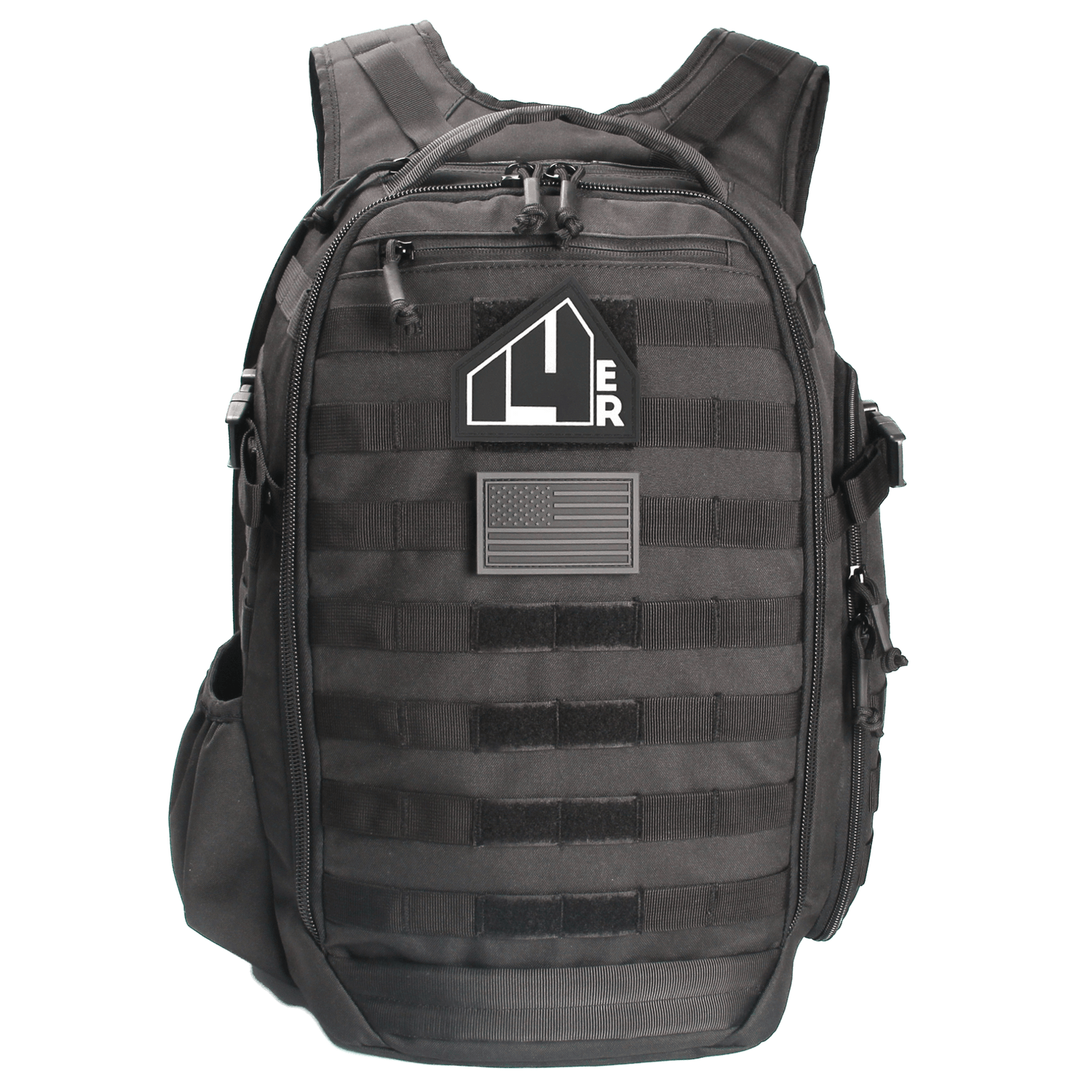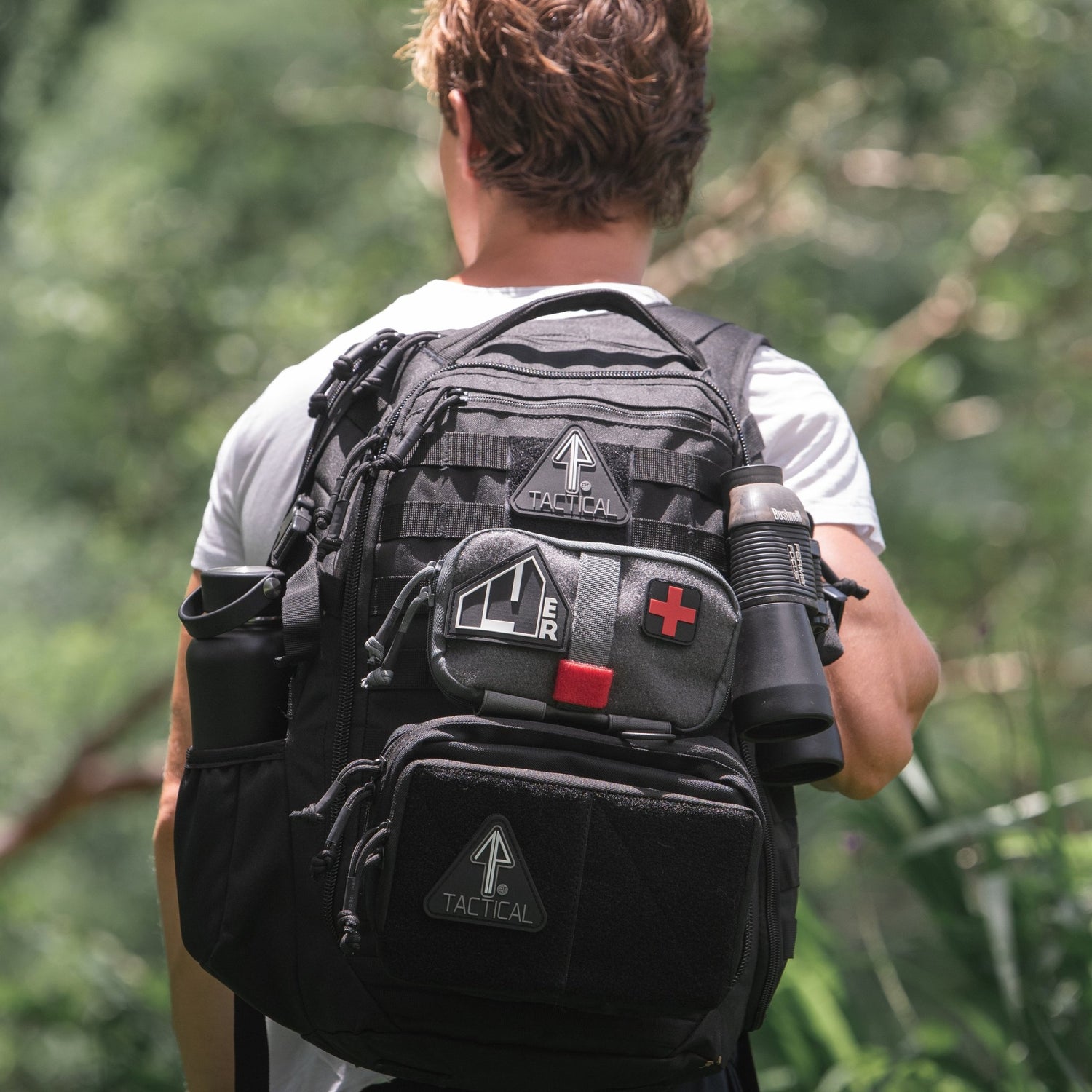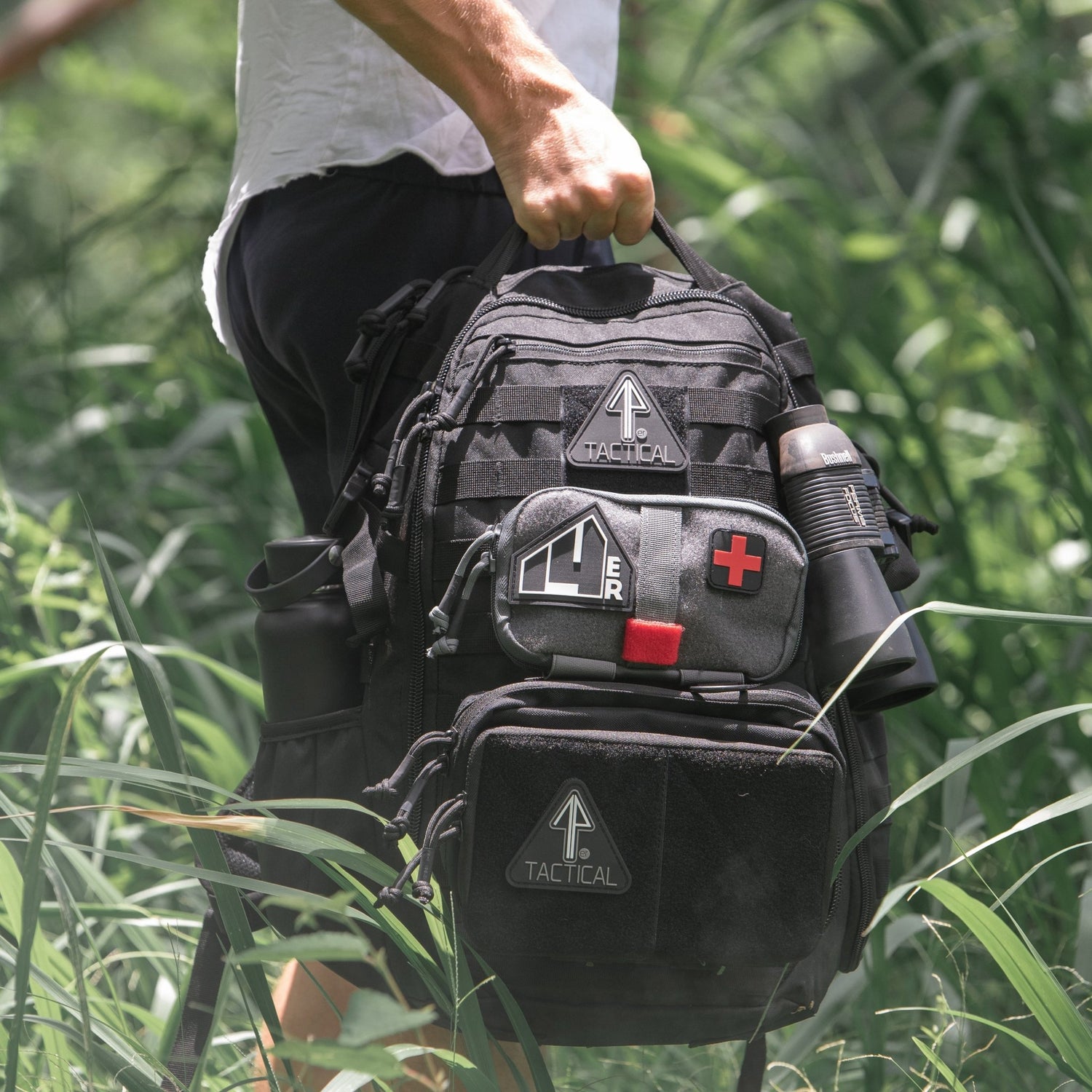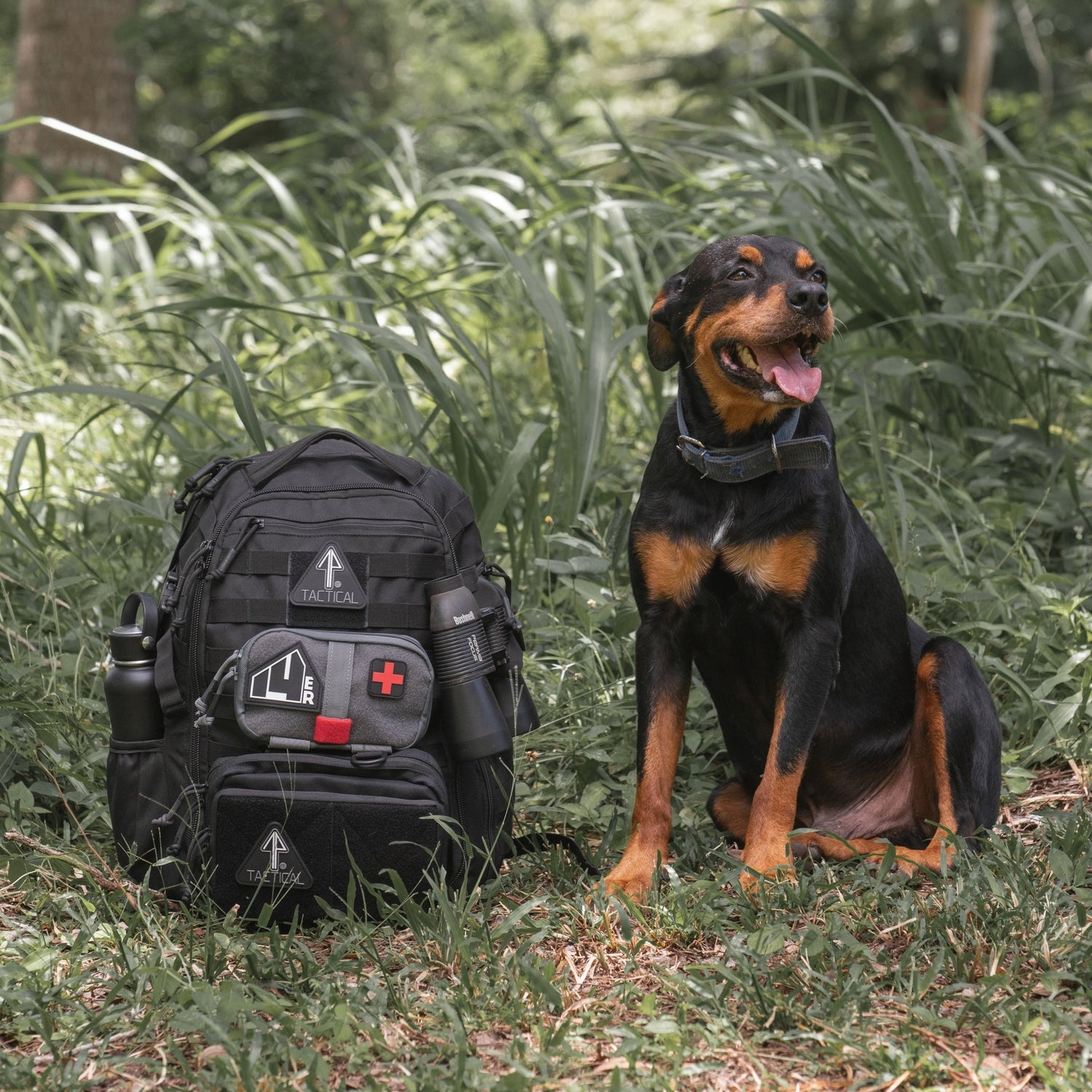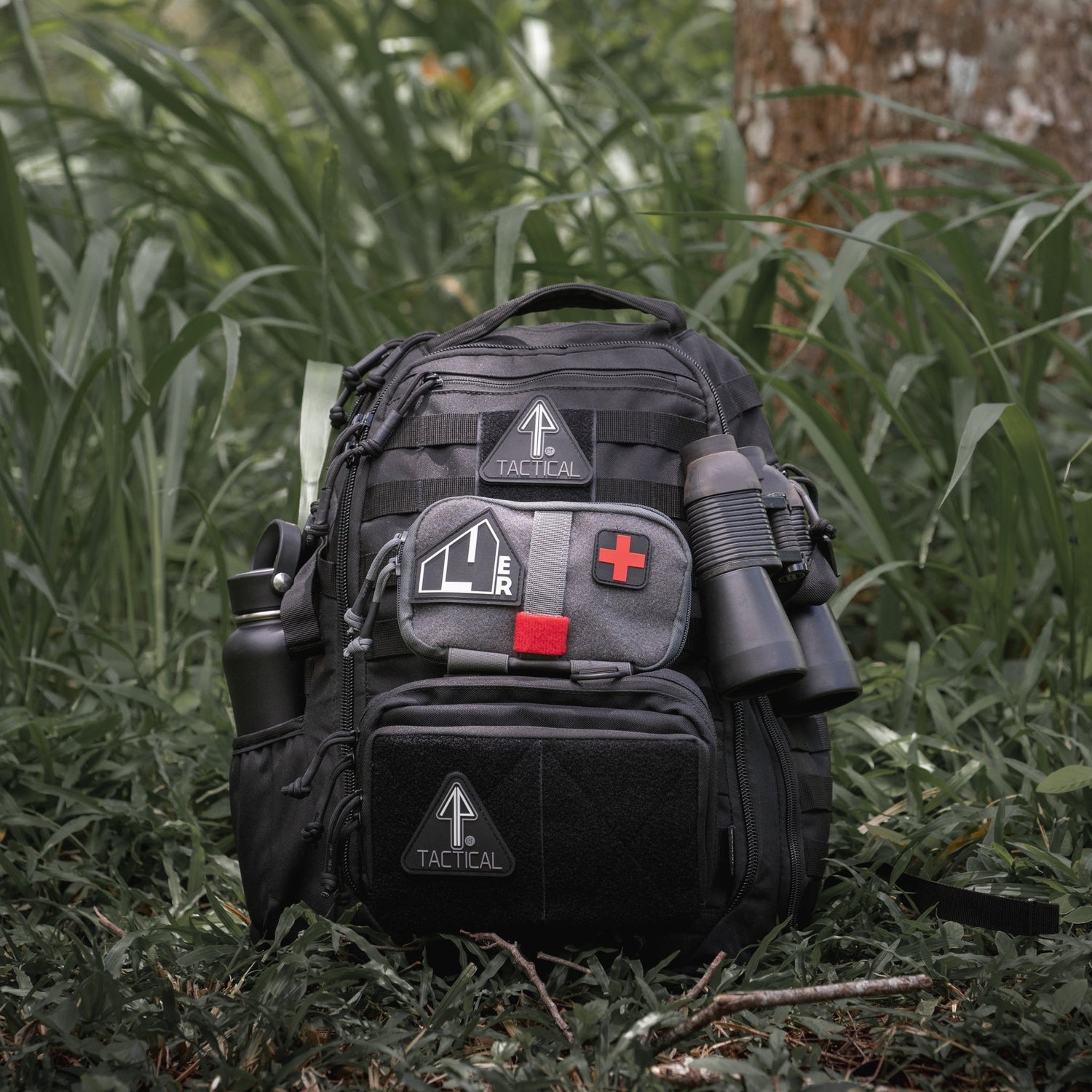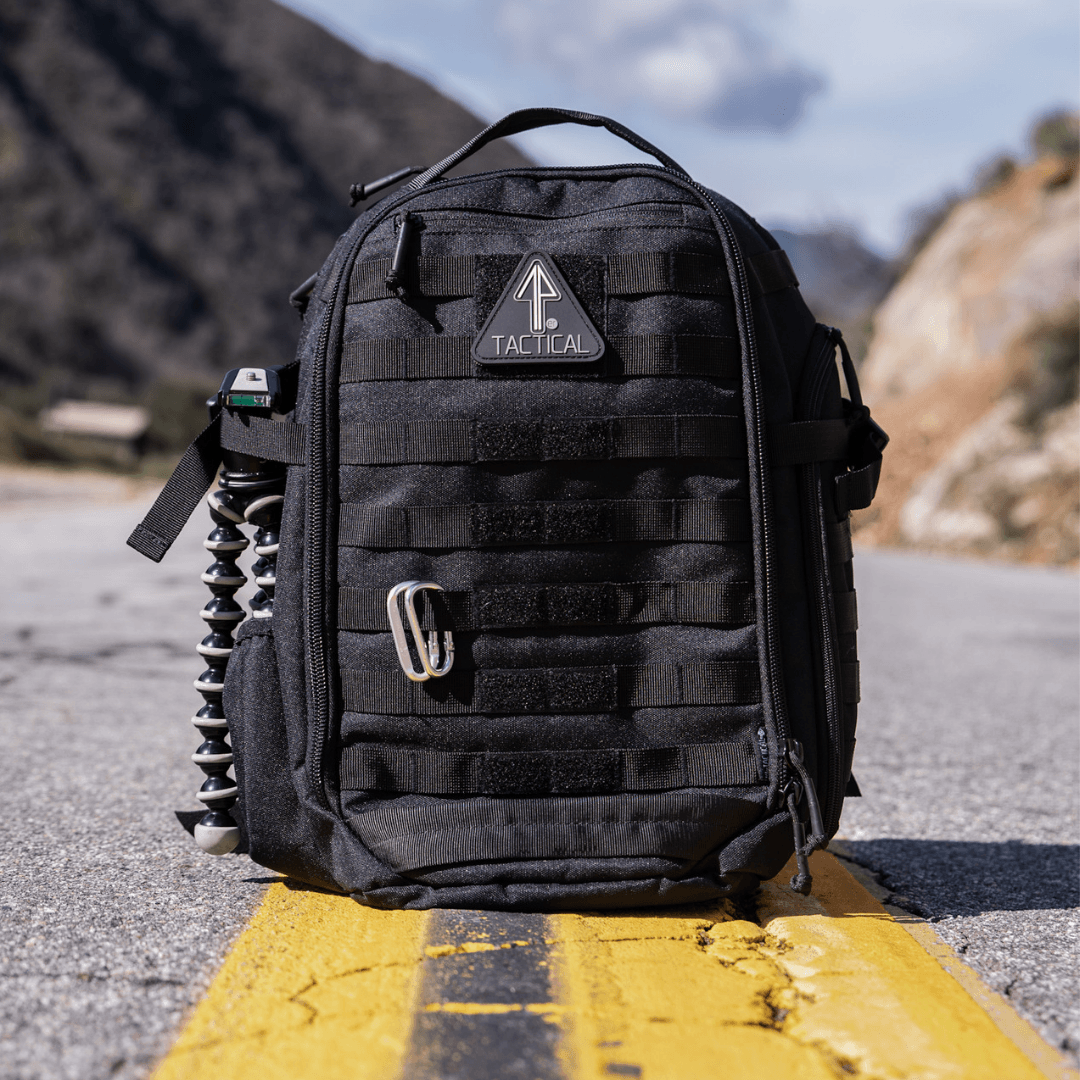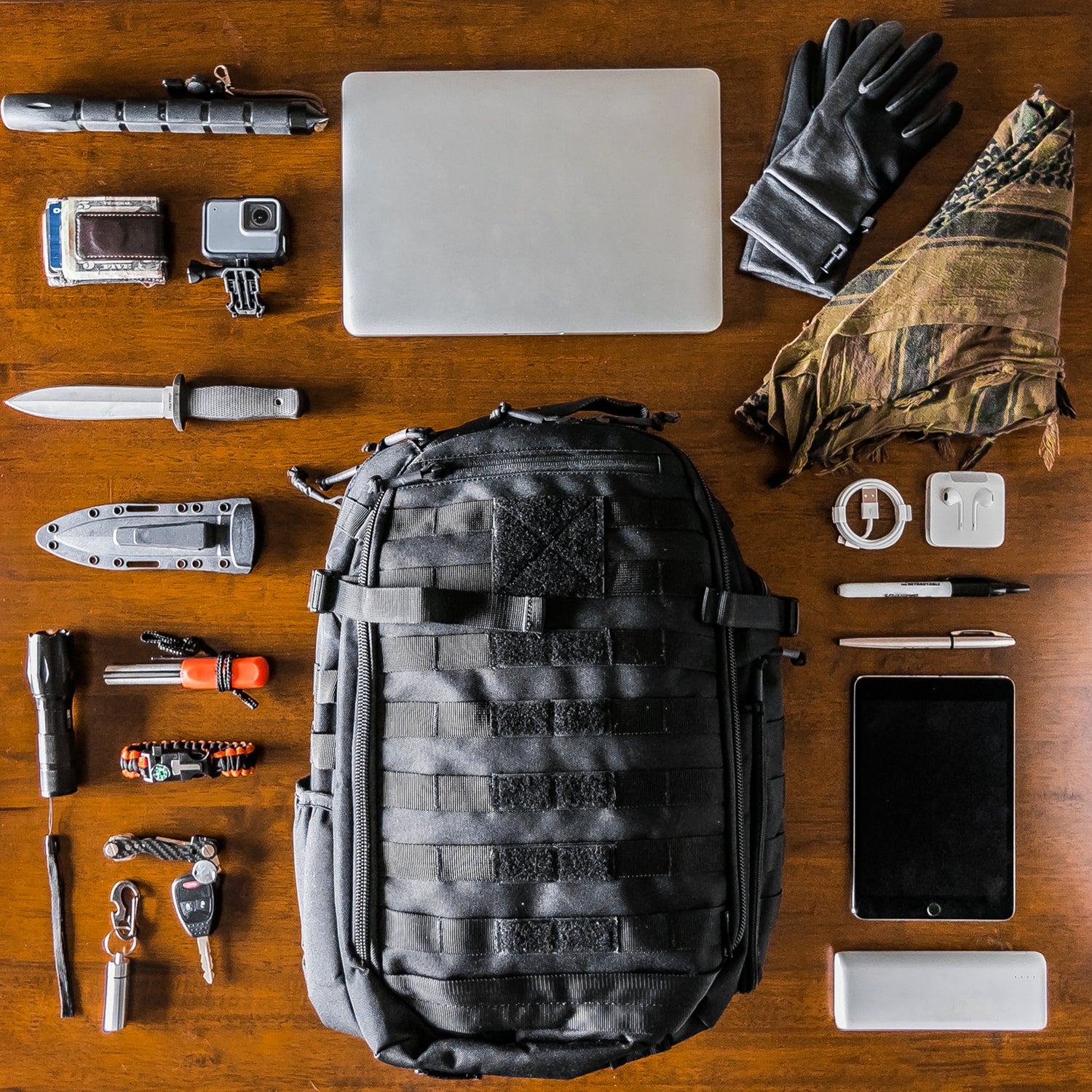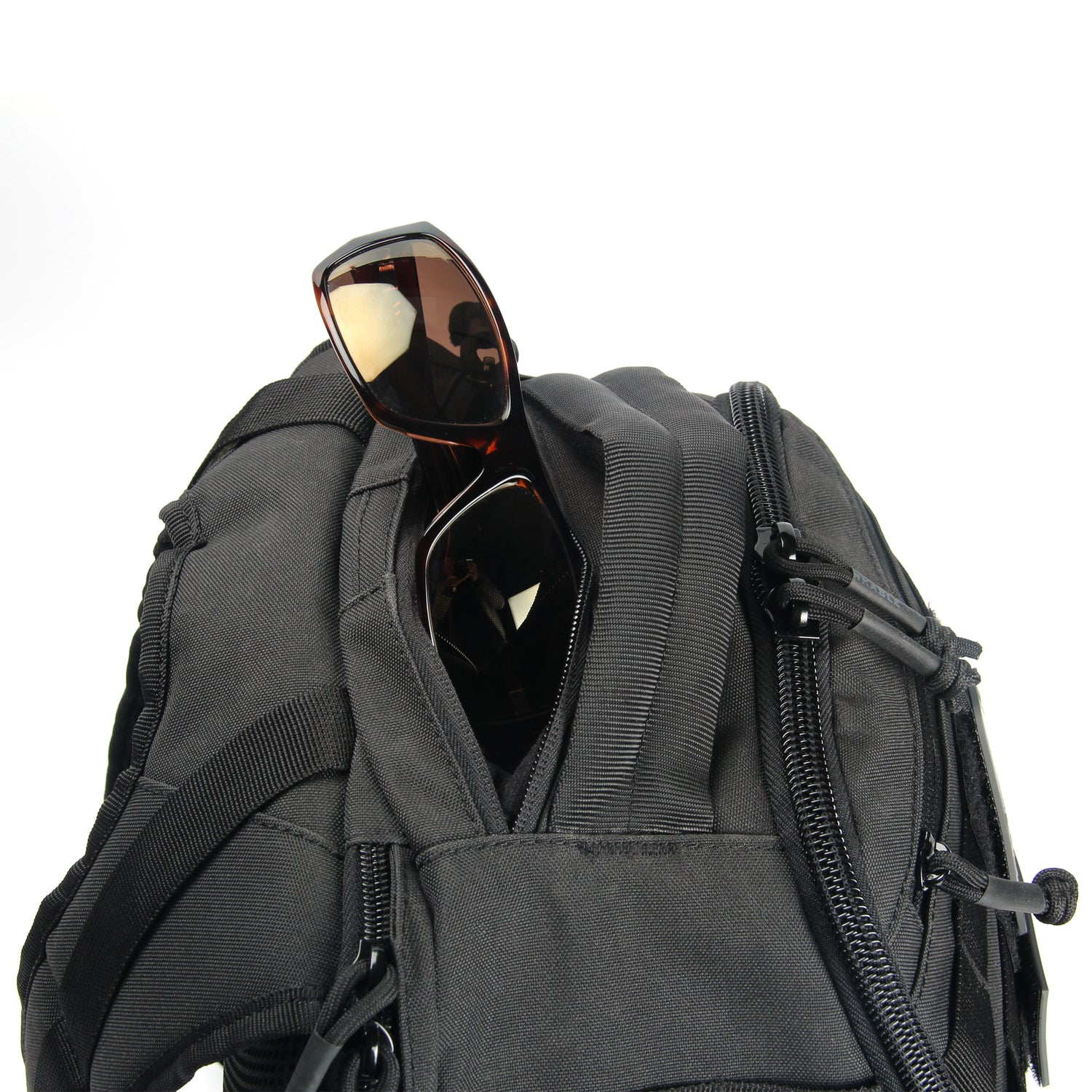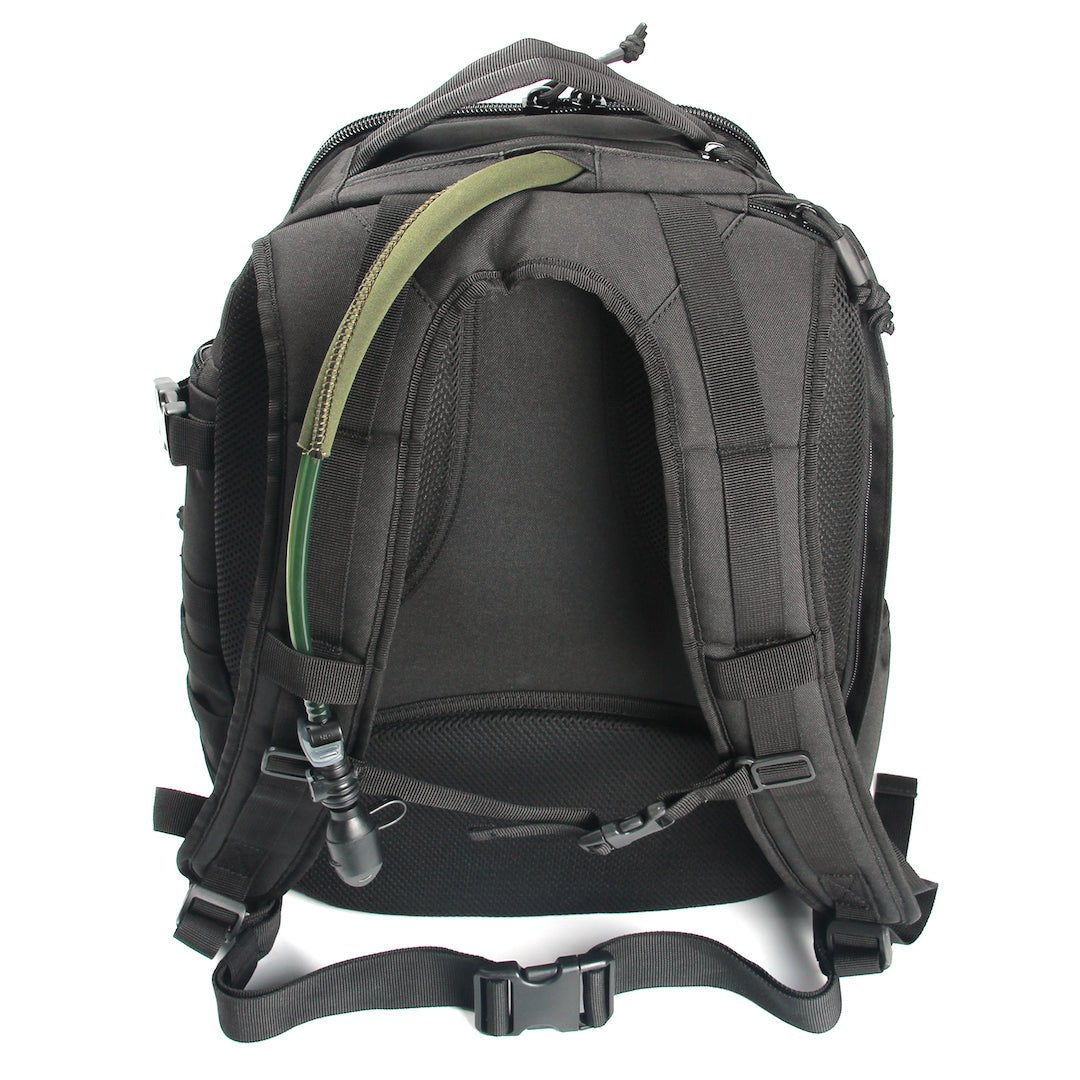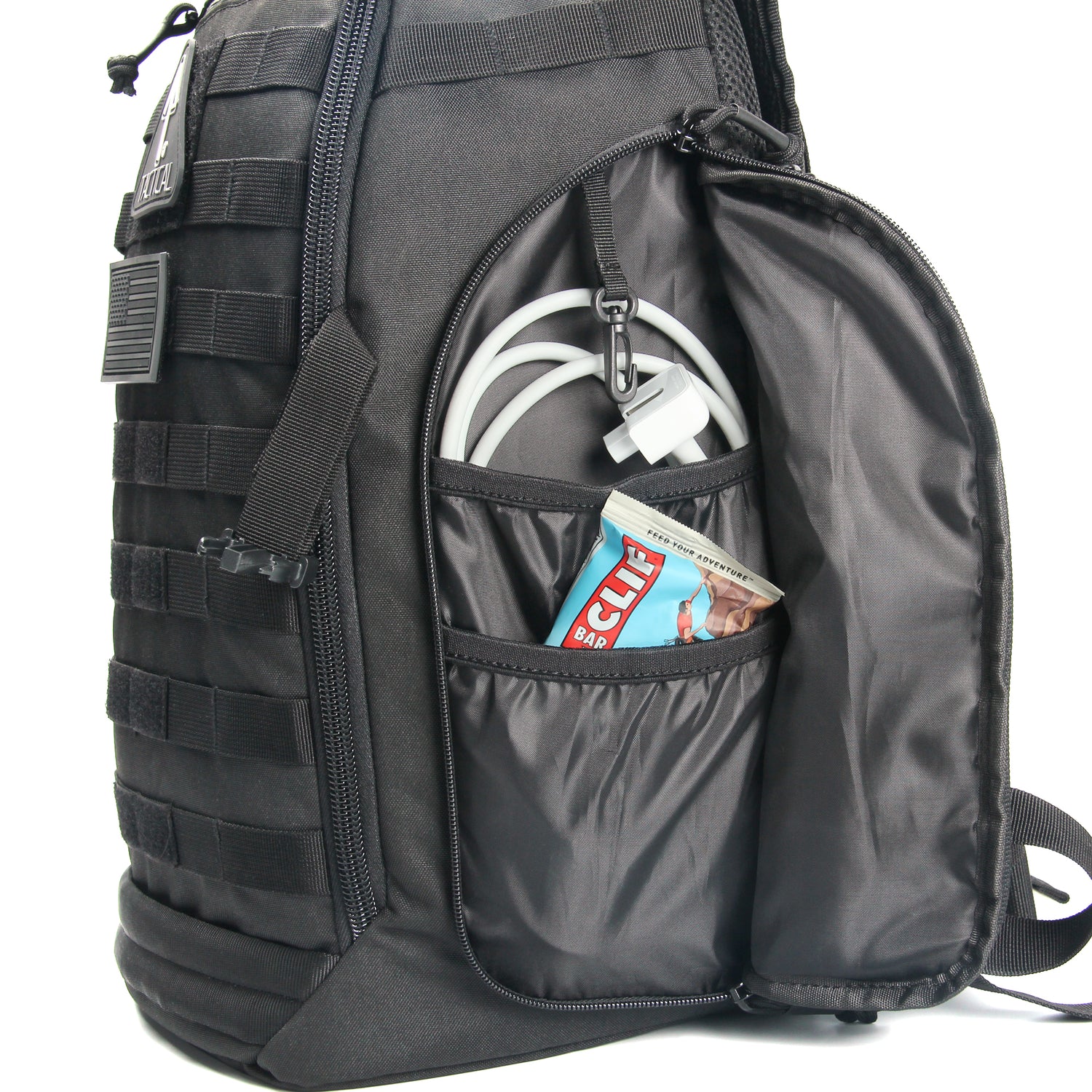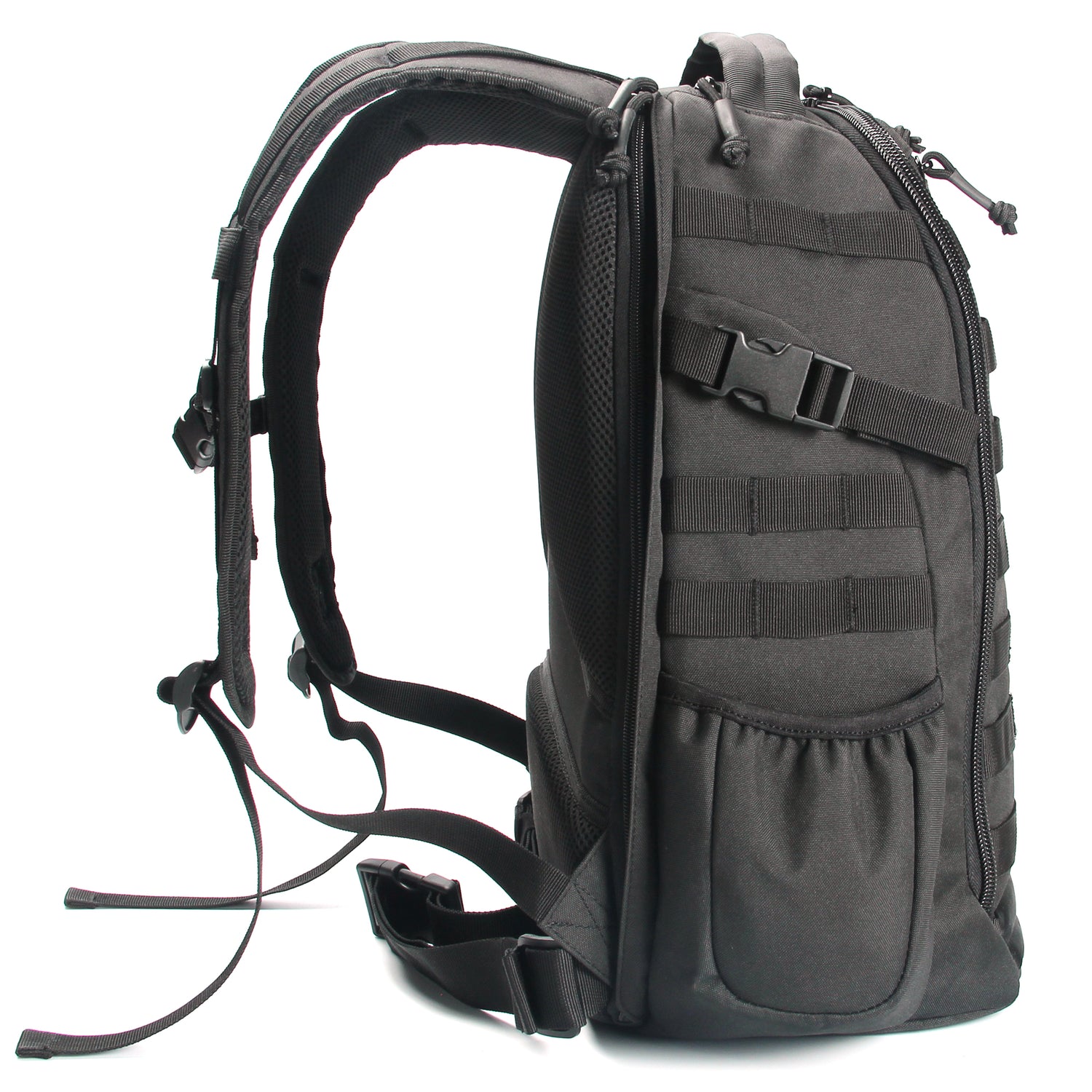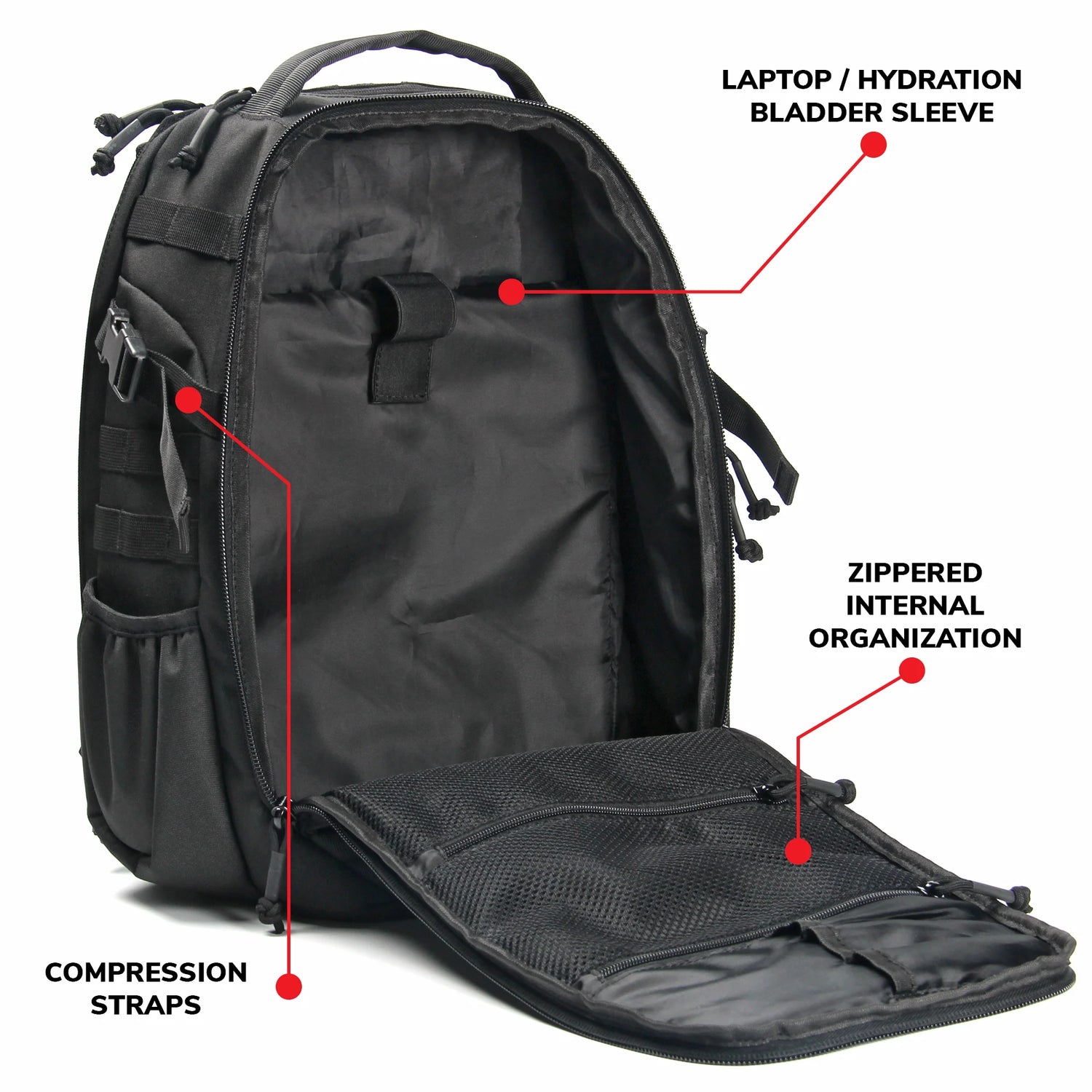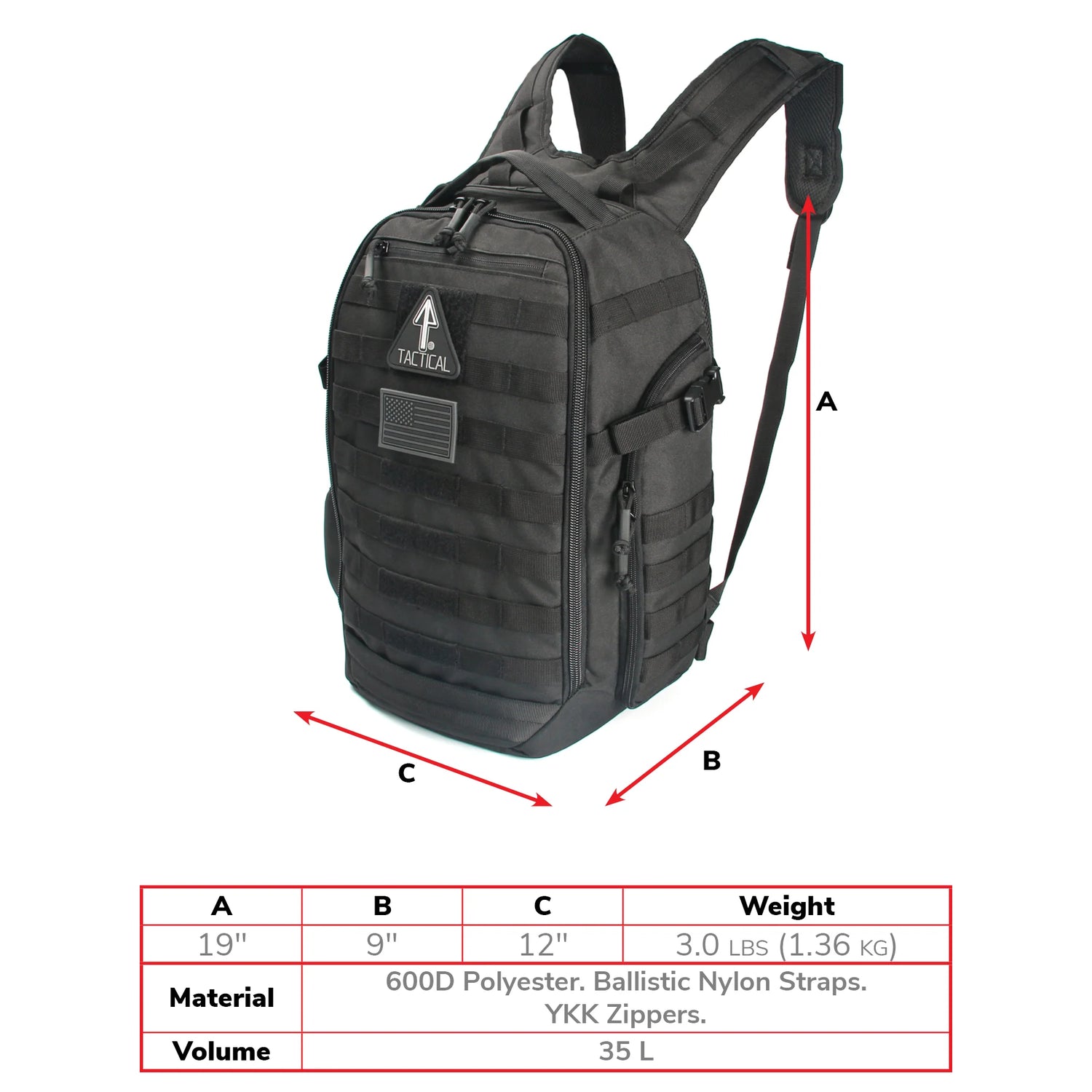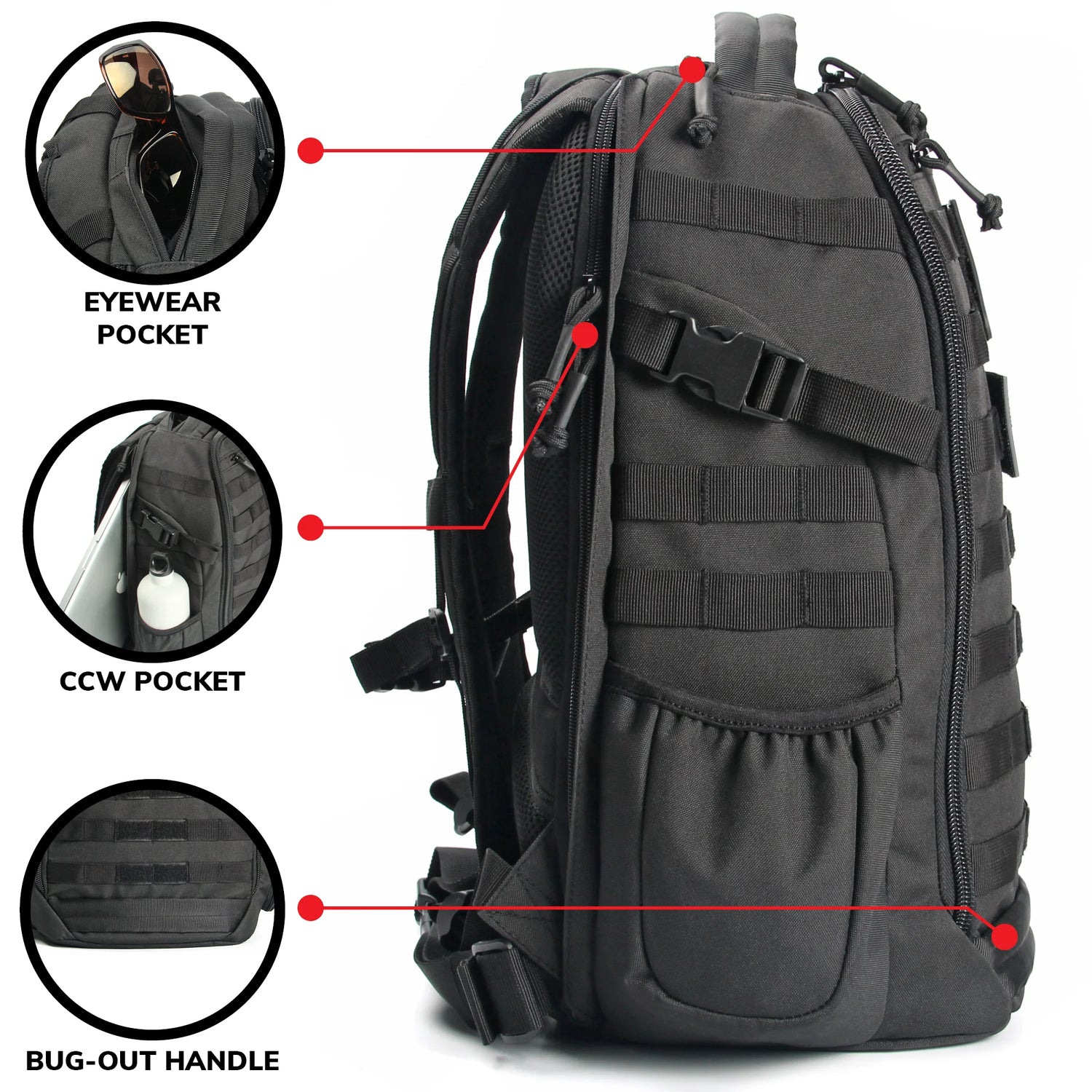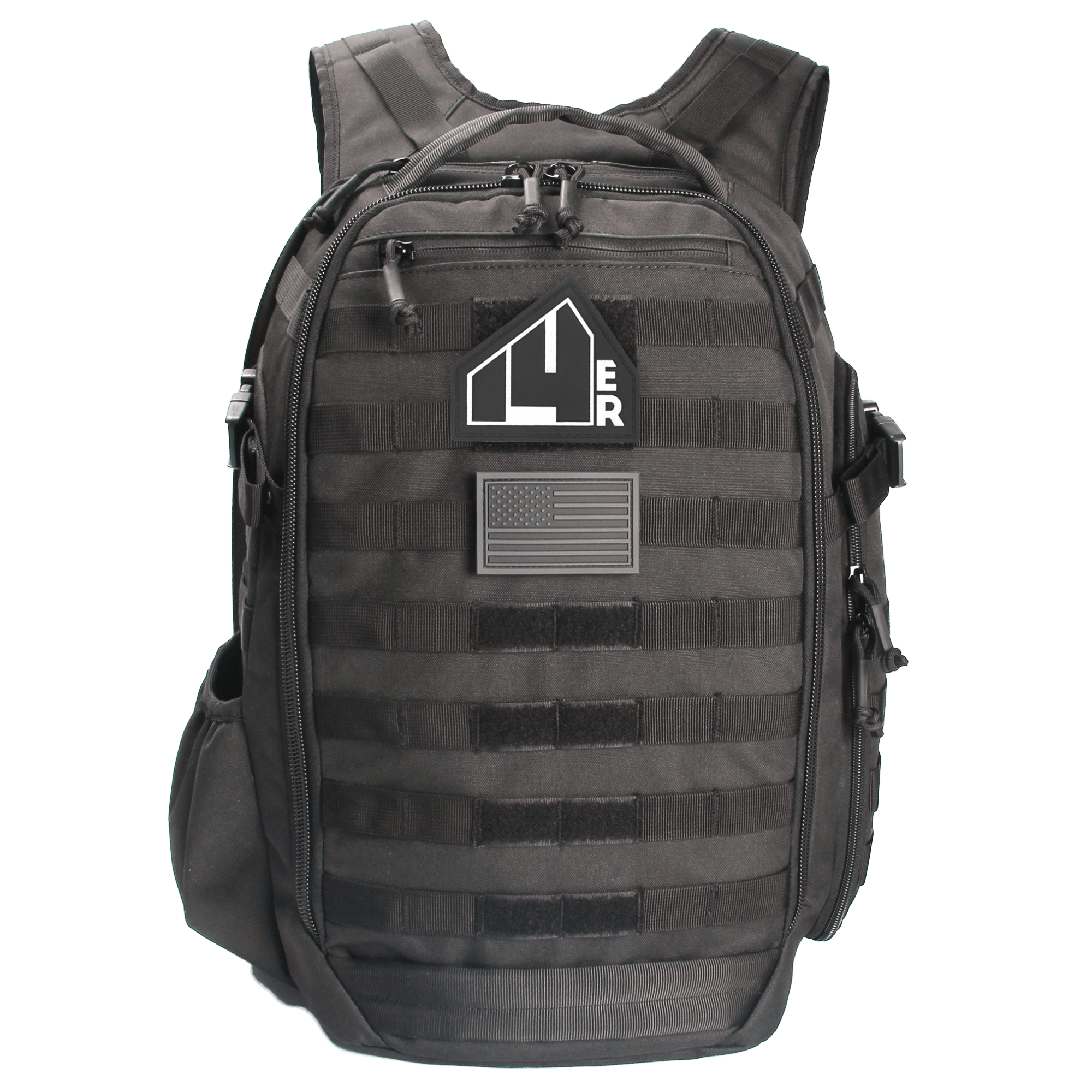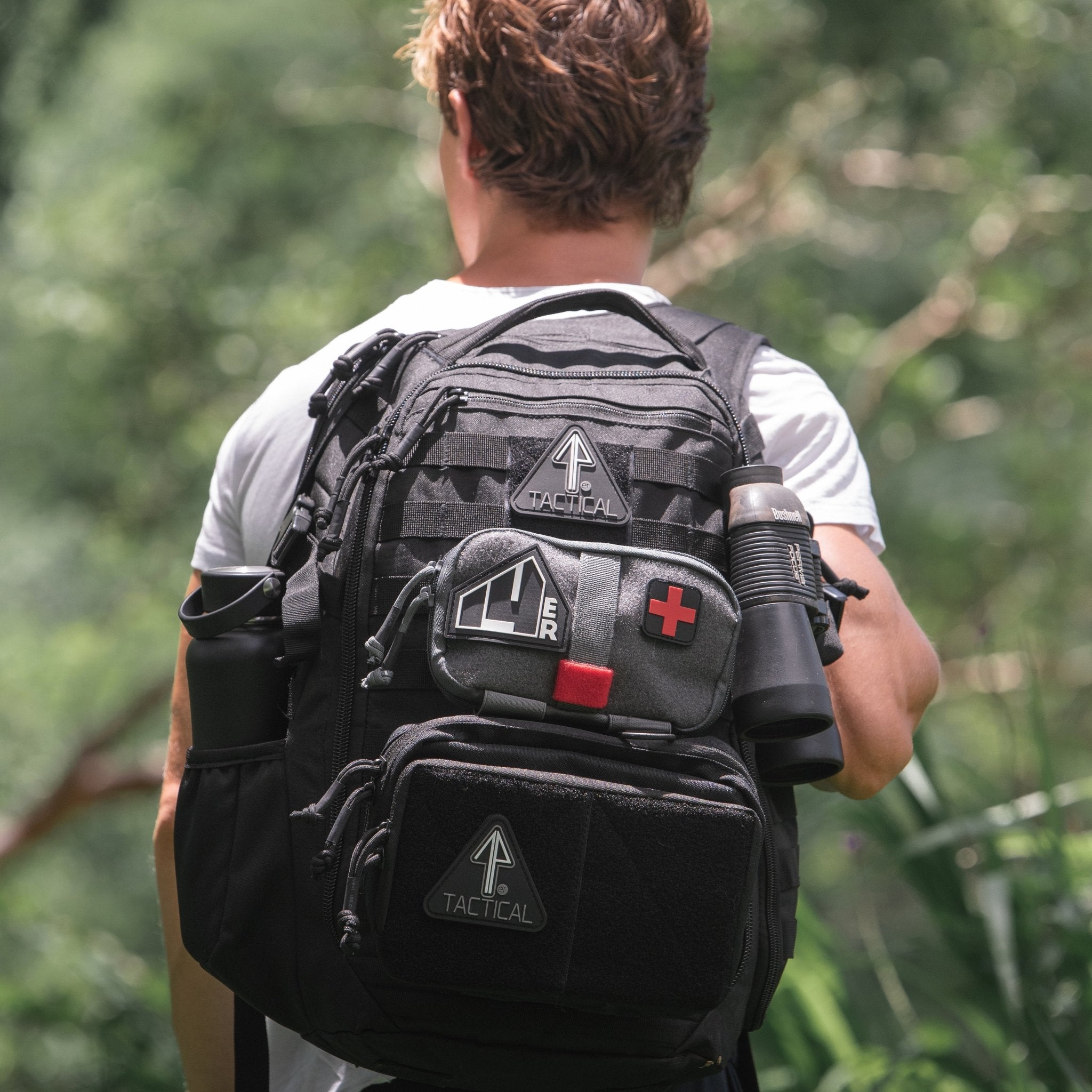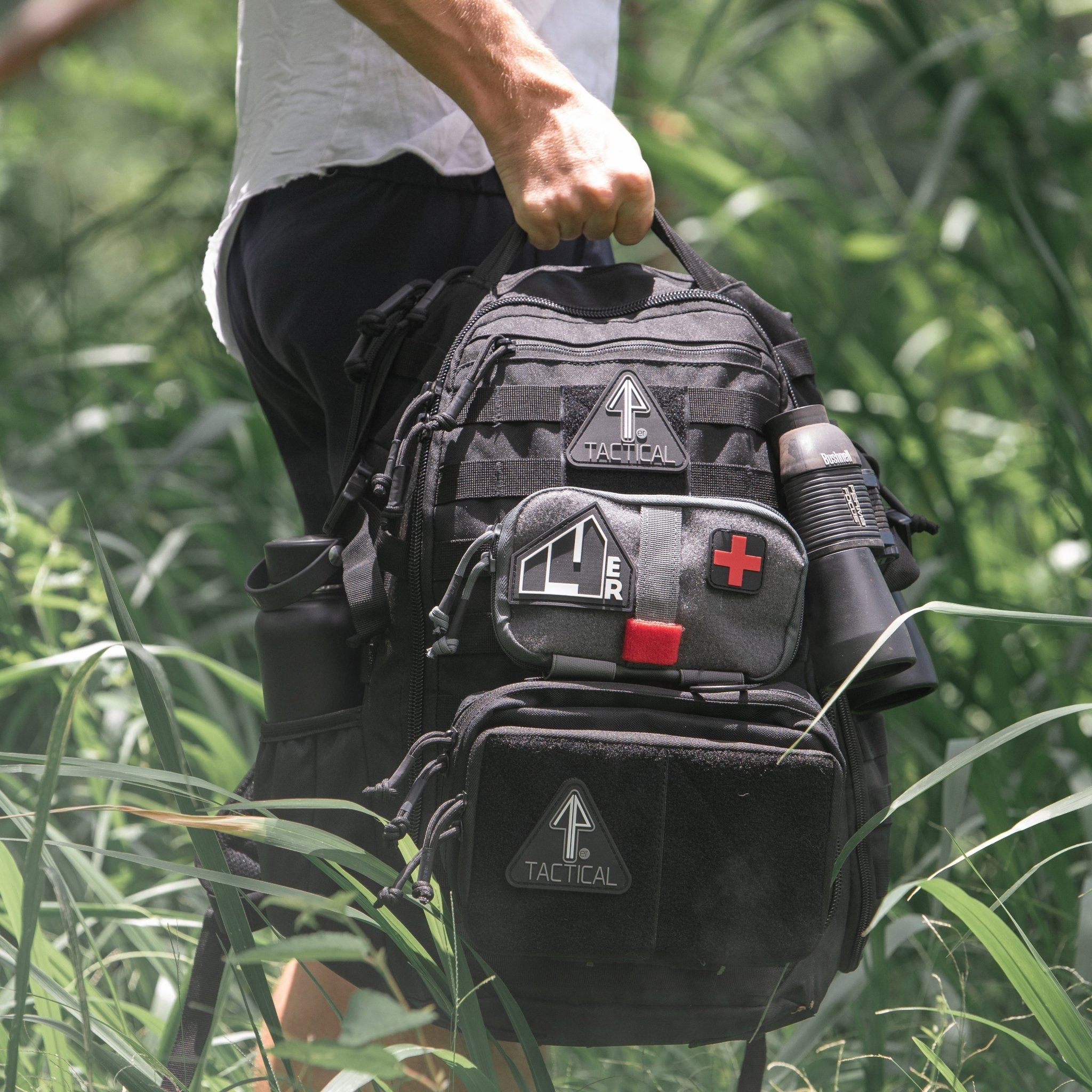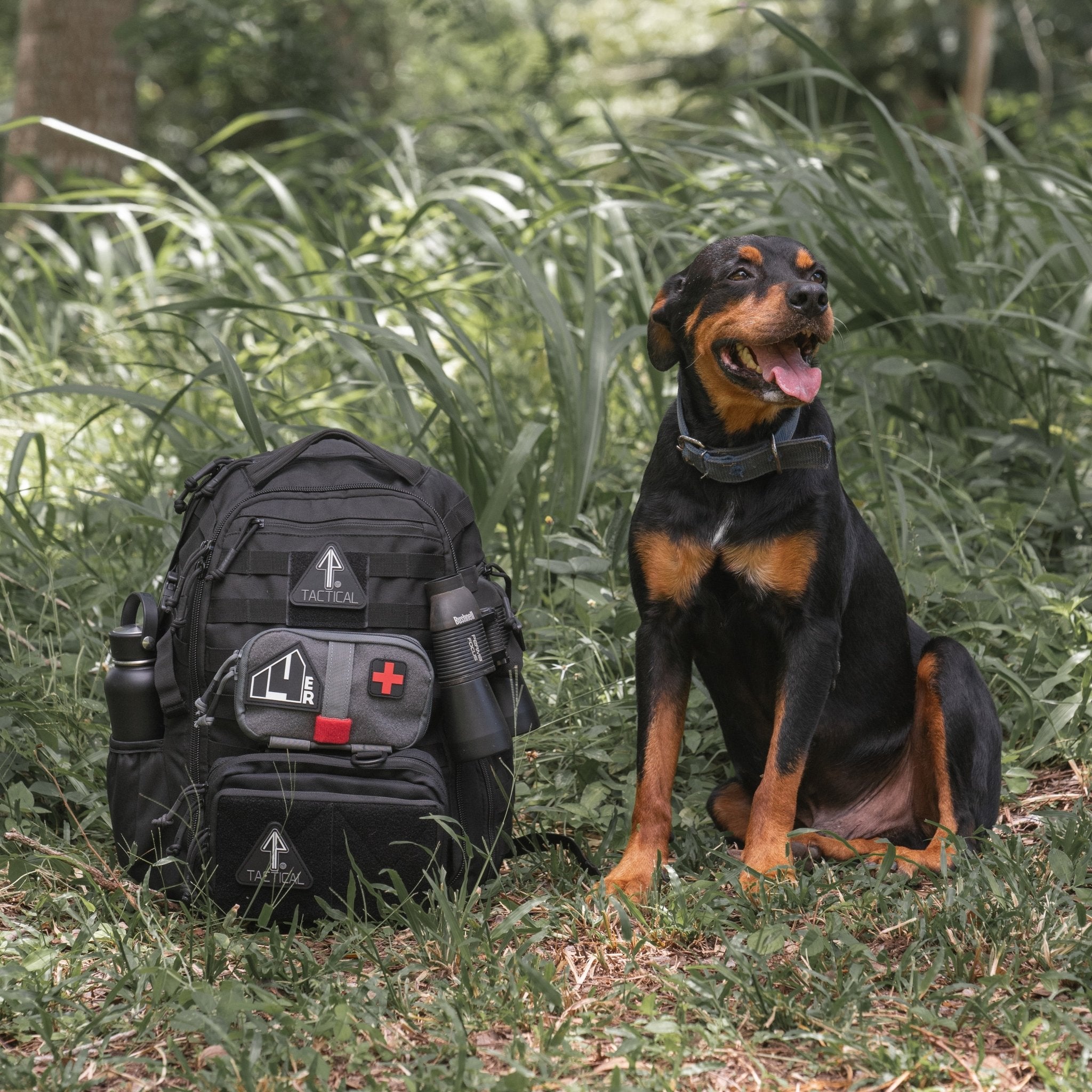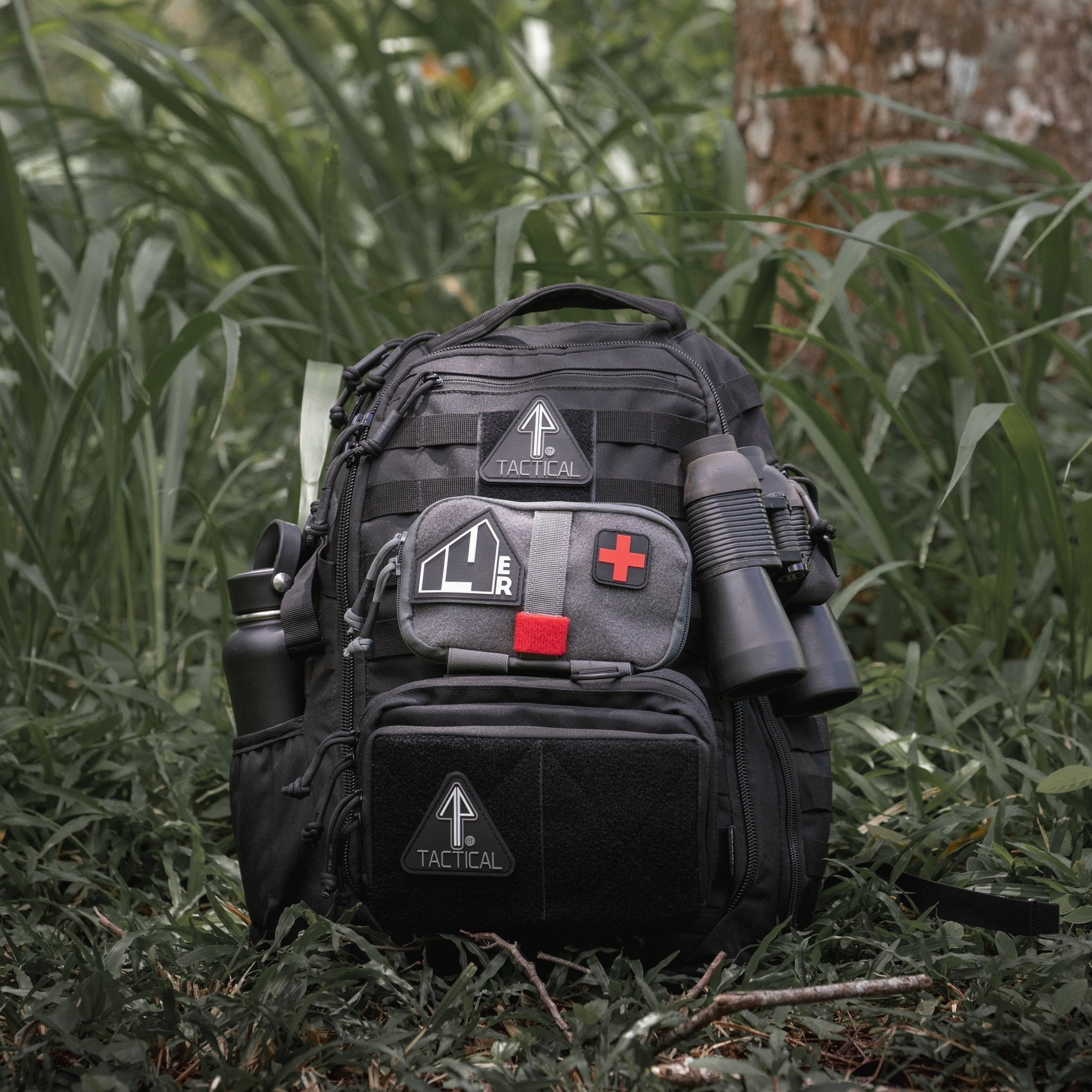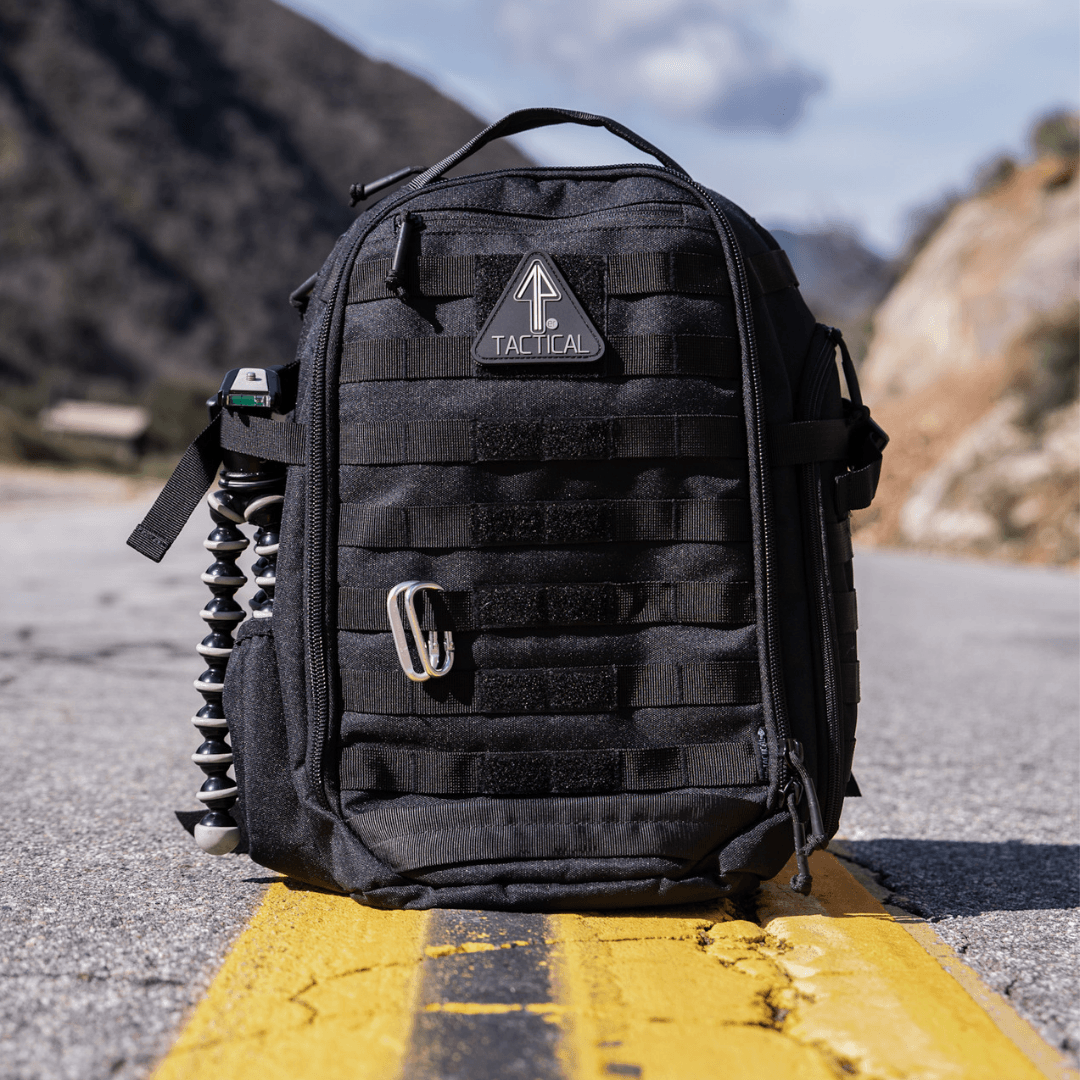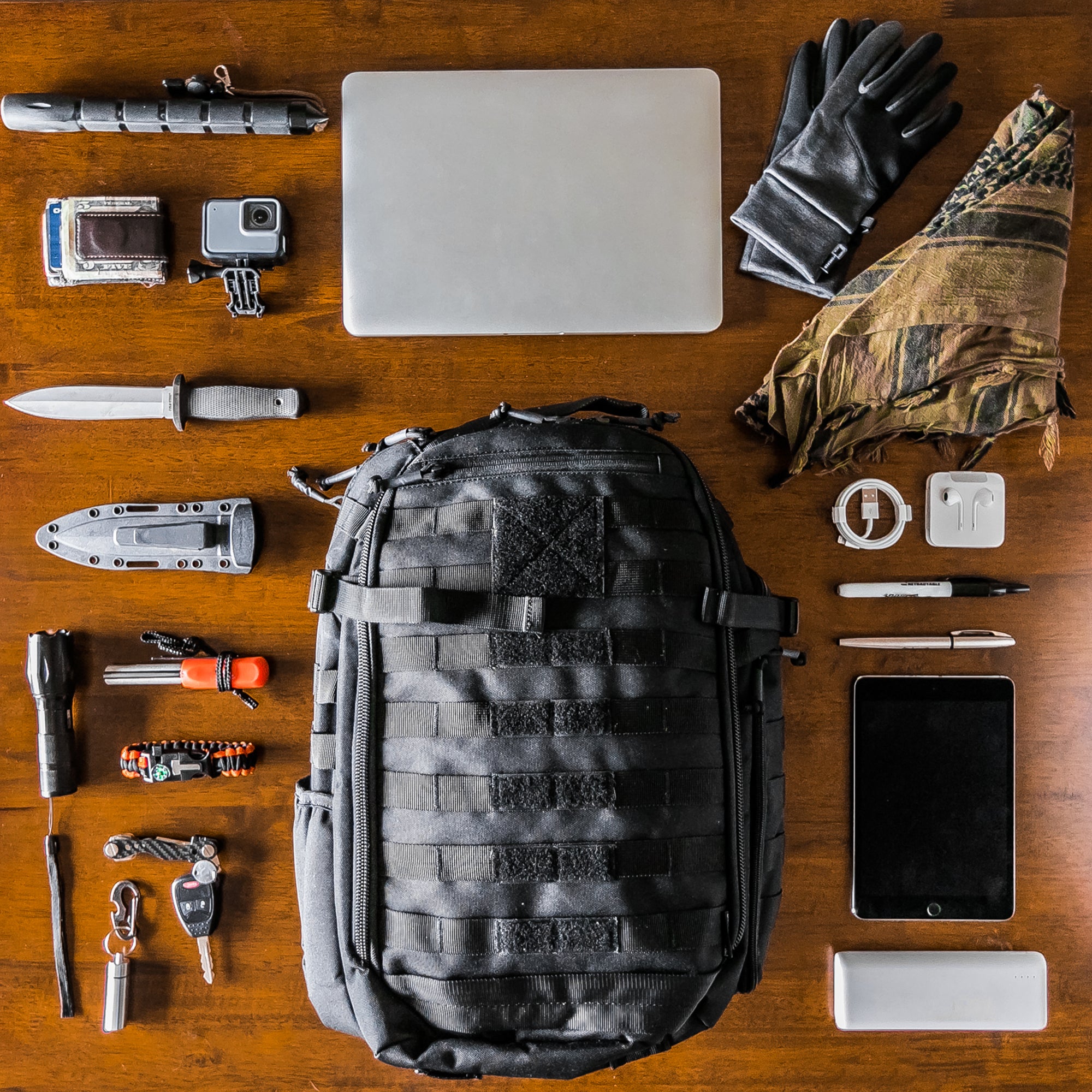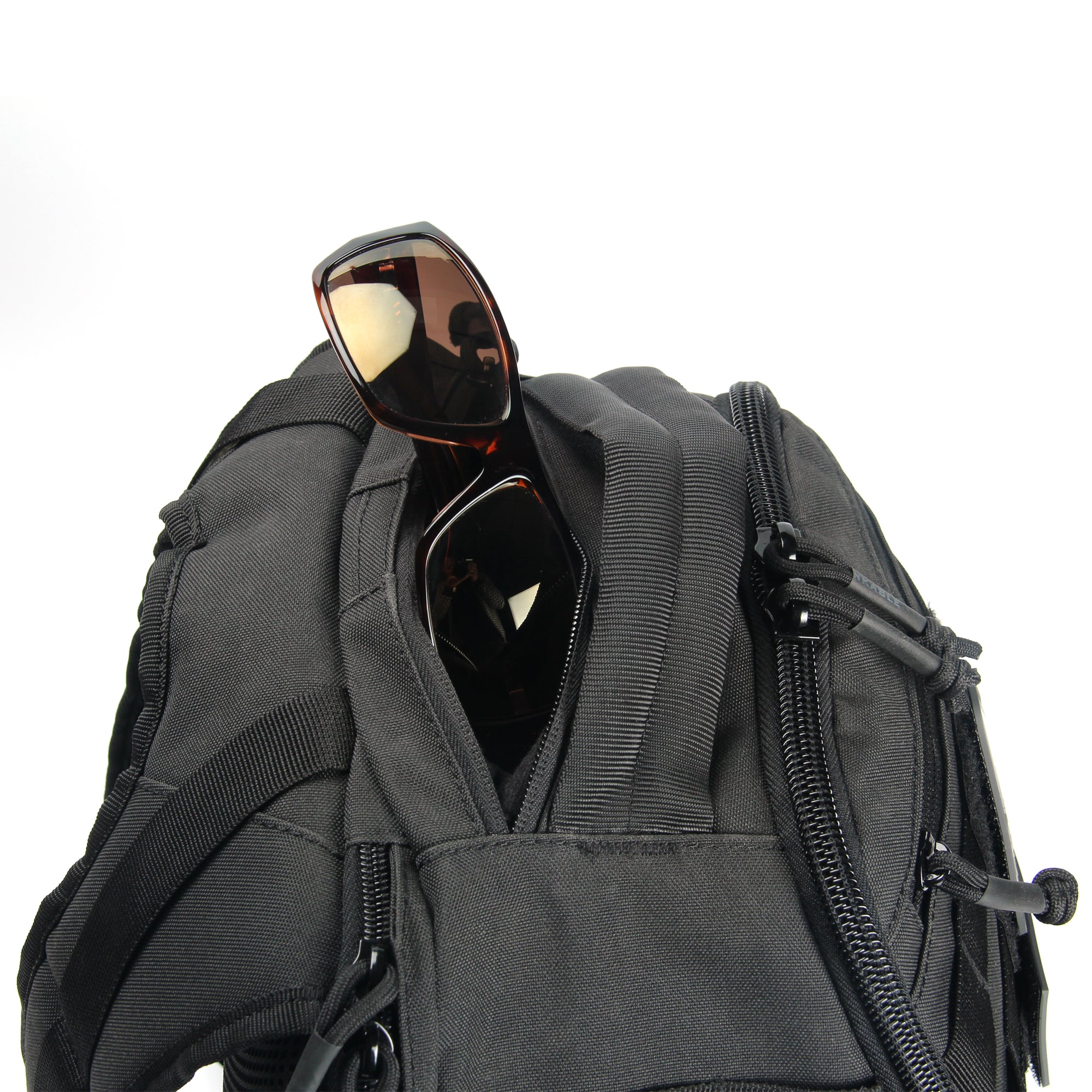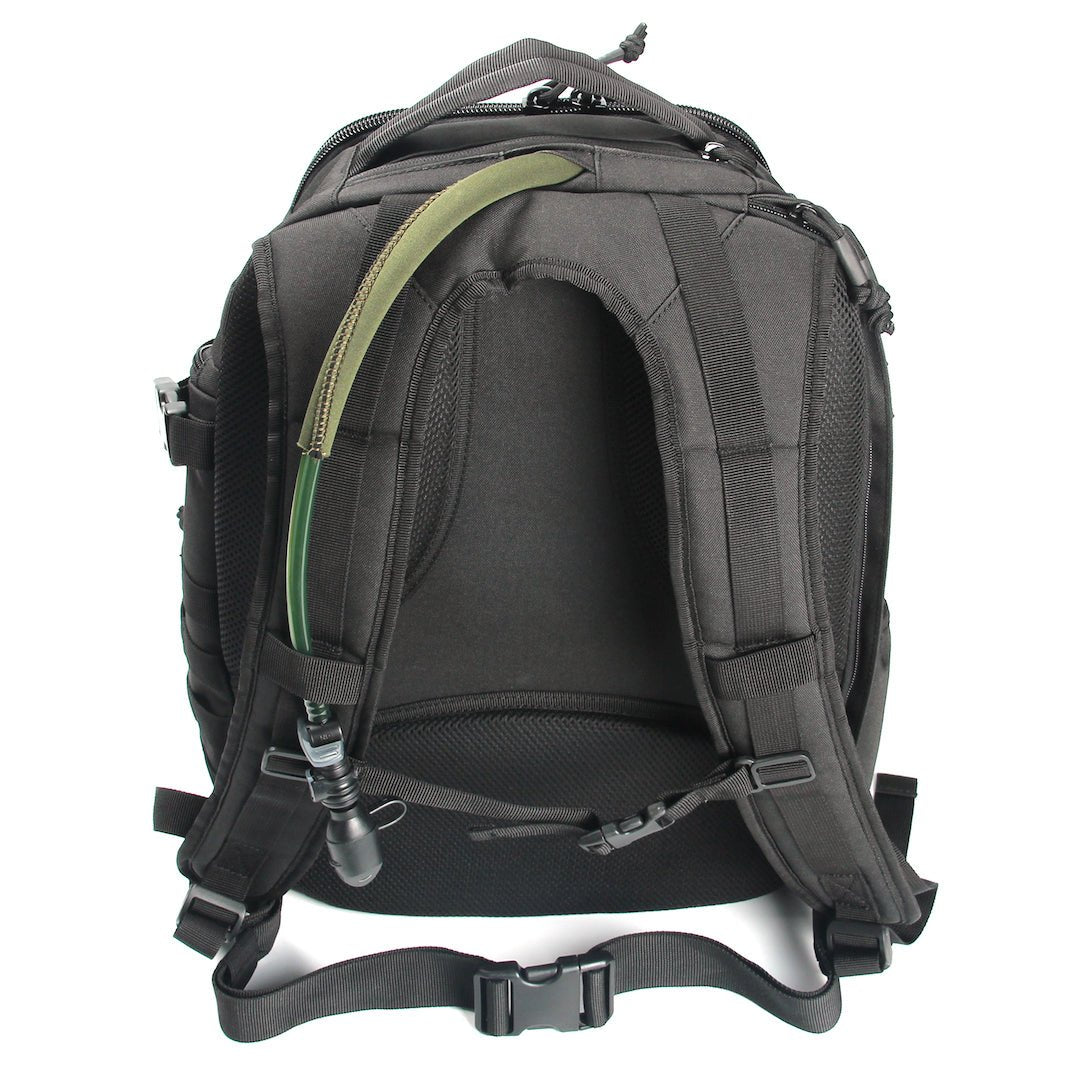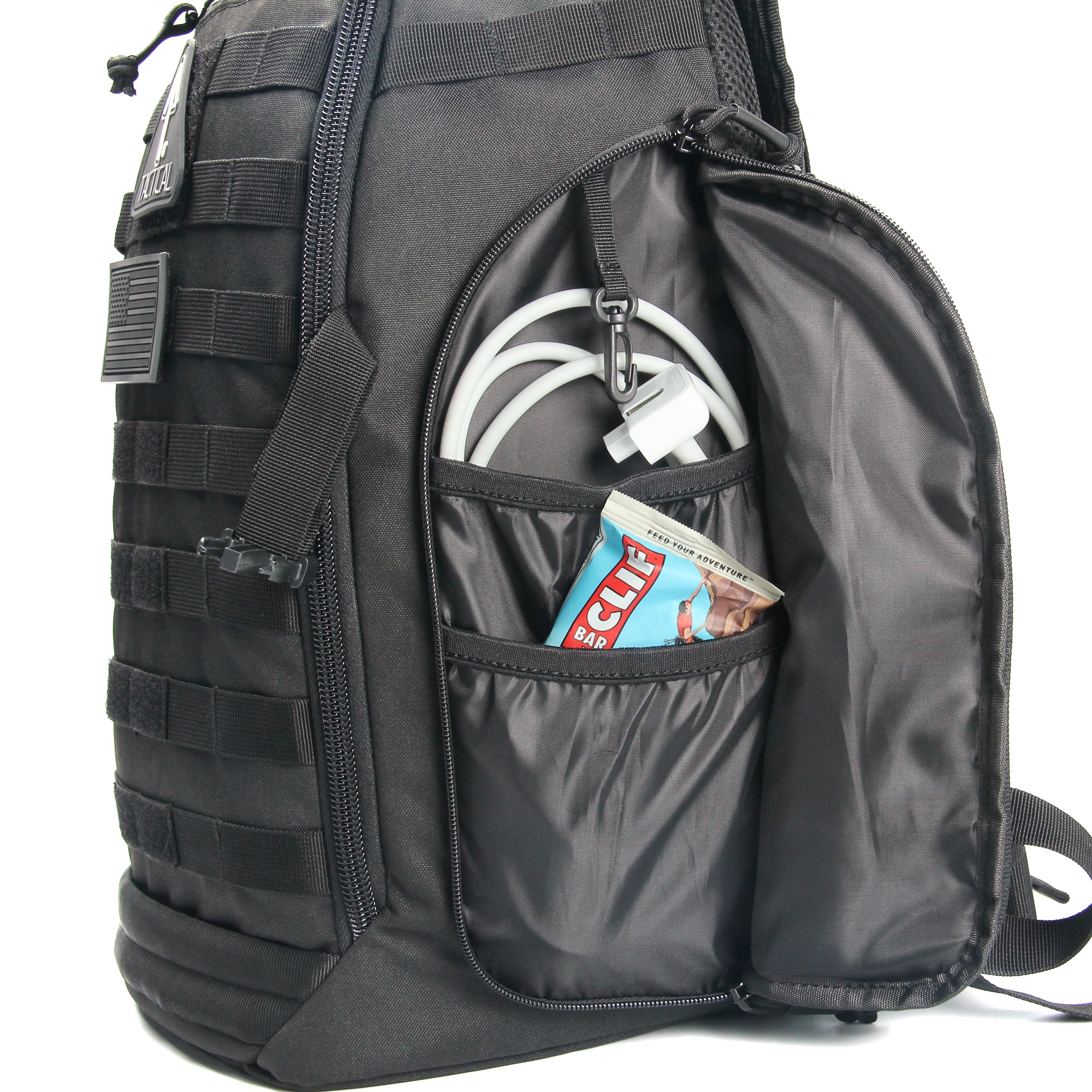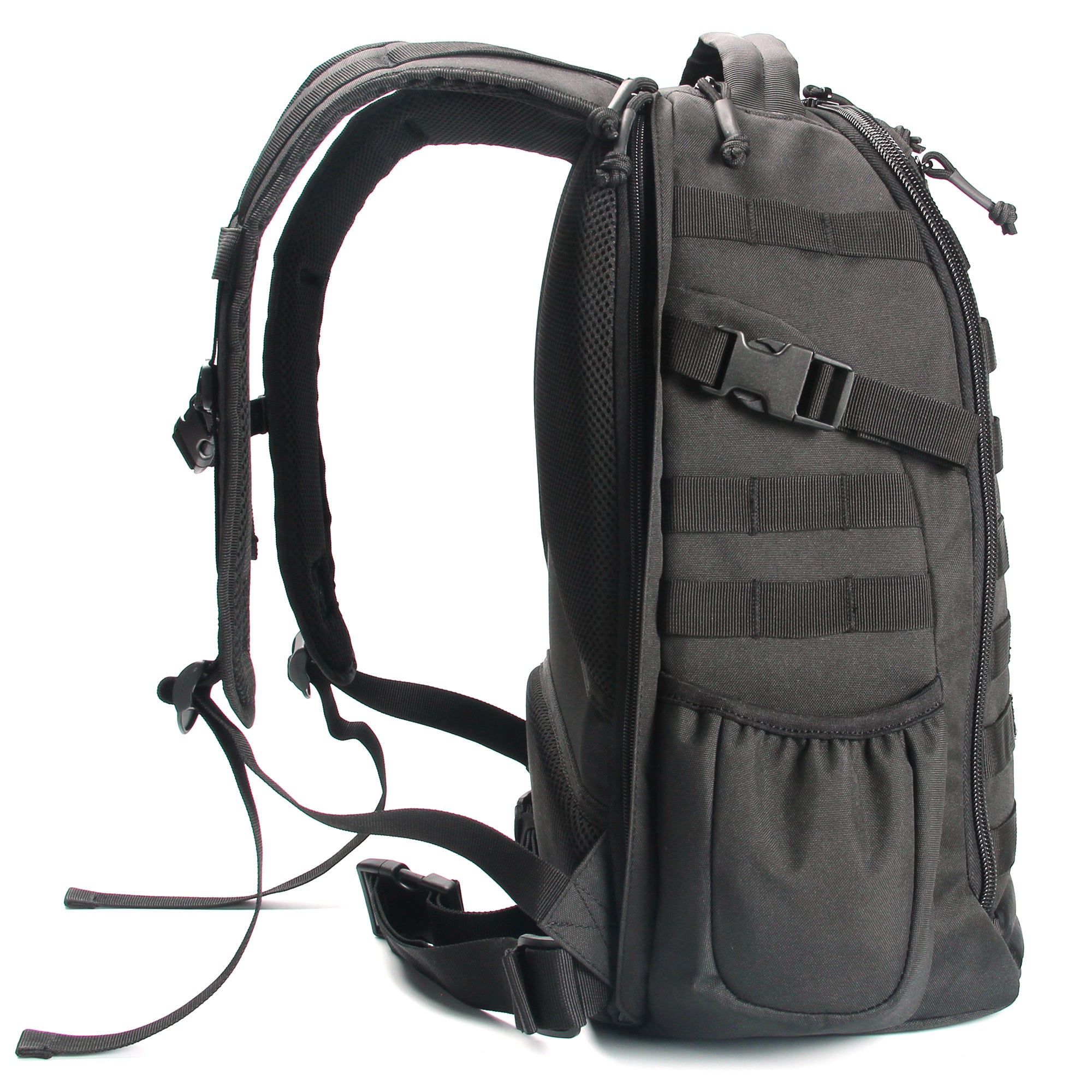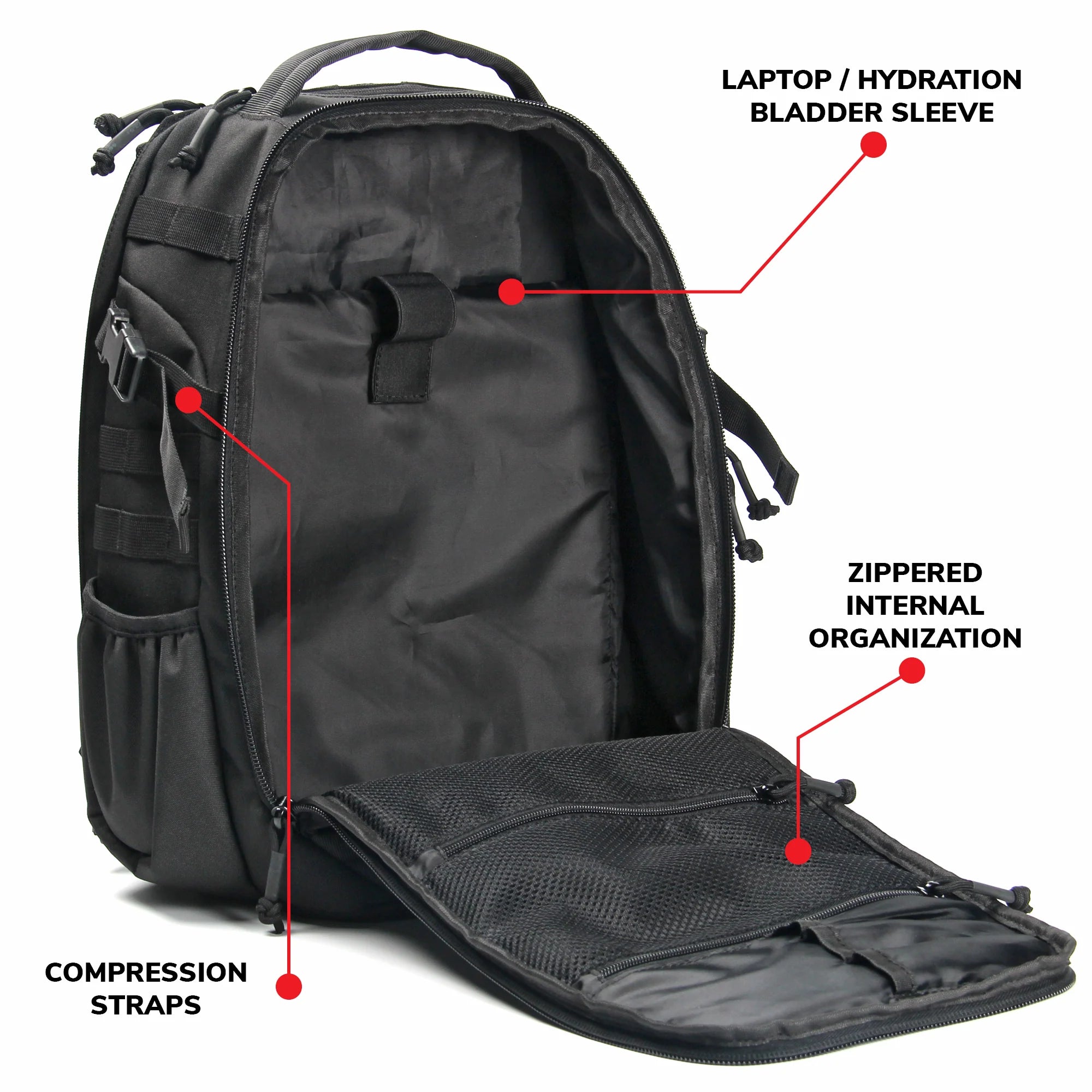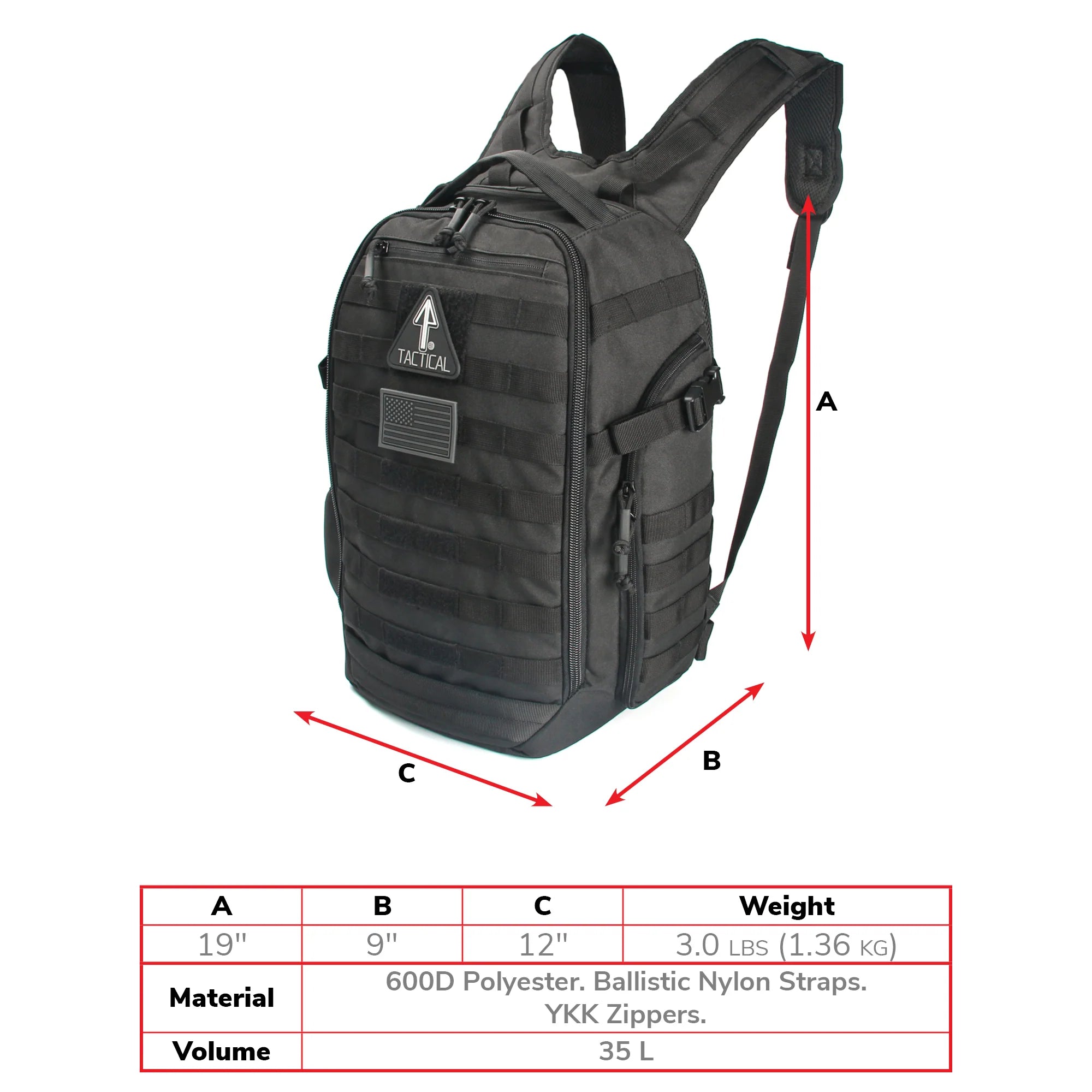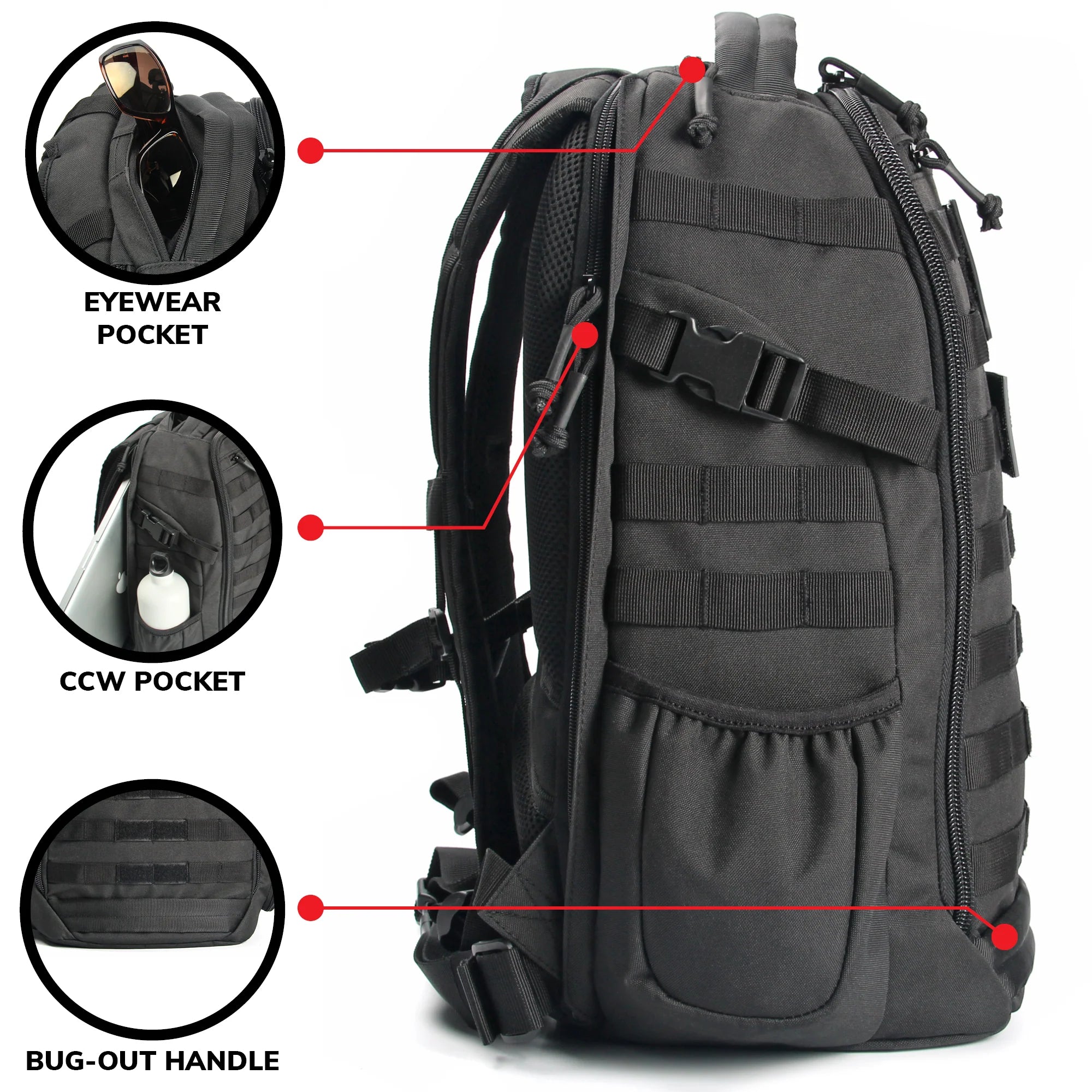
Thinking about doing a weeklong hike this spring? What a great idea! This is a fine time of year to hit the trails. As usual, we’re ready with a guide to help you plan an awesome adventure! In this one, we’ll discuss the ins and outs of tactical bag packing—so you won’t need to spend more time figuring it out.
Your Packing List: Weeklong Adventure Gear Essentials
Going away for a week can be tricky to plan for. You don’t want to be lugging around too much stuff while hiking, yet you’ve got to carry enough resources to last you a week. This demands efficient decision-making when narrowing down which items of adventure gear to pack.
What, then, are the weeklong adventure gear essentials for an outdoor trek? Most hikers will point to the Ten Essentials of outdoor adventure, which include resources like shelter, food, water, navigation tools and emergency care. The Ten Essentials can actually be flexible. You can do without a tent on a day trip, for example. But you would certainly need one for a weeklong hike. You don’t want to sleep out in the open in the wild!
Tactical bag packing begins with proper research. Learn about the trail you will be hiking, the expected conditions (including possible weather), the environment and wildlife, and the level of difficulty. When you plan to pack your bag, you’ll make your gear selections based on the information you’ve learned.
Then make your packing list. Survival essentials come first. Then list any items that will greatly benefit your performance effectiveness. For example, some folks find that hiking poles can strongly improve their performance, especially on mountainous trails. Anything that can truly help you achieve your hiking goals is worth considering.

Efficient Packing Tips for a 14er Tactical Bag
As a tactical practitioner, you’ve surely got a tactical backpack in stock! That type of backpack is comparable to a commercial outdoor backpack, and quite likely more durable and functional. Tactical backpacks are close in design to the military rucksacks that inspired their manufacture. So you know you’re getting a rugged, capable piece of equipment that’s highly suitable for weeklong outdoor adventures.
The 14er Tactical Bag is an excellent backpack of this type. One of its biggest advantages is its configurability. Due to its MOLLE system of webbing/straps, you can add or remove external compartments to the 14er Tactical Bag. That gives you a multitude of options for arranging gear in your backpack, expanding its carrying capacity and configuring ease of access for various items.
At the beginning of your hike, you are likely to have more food items on you. That’s when you need a backpack expansion, to allow you to carry more stuff. Accessibility is also a concern. You don’t want to be digging into your pack every time you need something. Having items contained in pouches strapped to the hide of your backpack makes them easier to retrieve.
Your tactical bag packing approach should also differ when preparing for a weeklong adventure compared to a shorter trip. Many hikers practice outdoor gear organization where the primary consideration is weight, positioning heavier items so they’re right against your back. But for a weeklong hike, you can expect to carry some items that won’t see frequent use, along with items that you’ll be reaching for all the time.
So it makes sense to manage outdoor gear organization according to accessibility of items, regardless of their weight. The items that you will be retrieving with great frequency should be placed in easy reach. However, you should also plan for the placement of your individual first aid kit (IFAK). While it’s not something you’ll need all the time, you’ll want to be able to deploy it rapidly when you do need it! Keep it in an IFAK pouch strapped to the exterior of your tactical backpack.
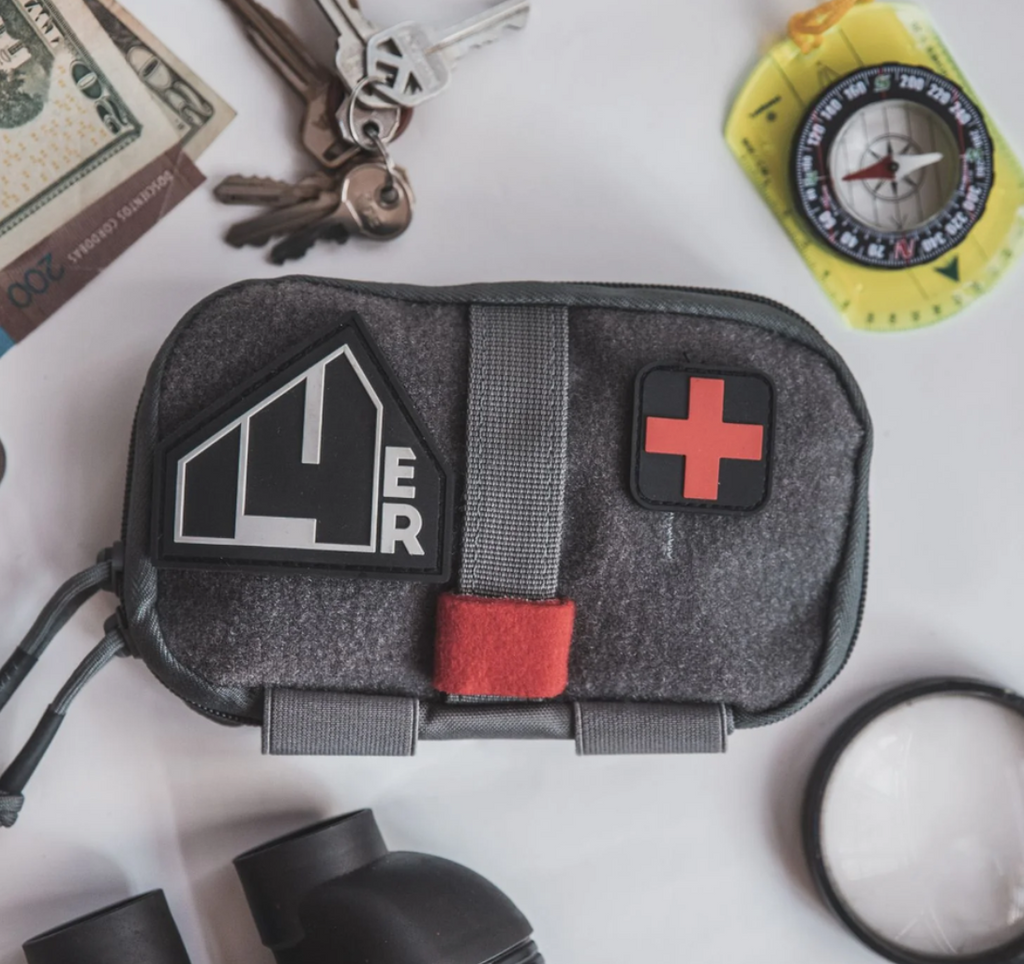
Efficient Packing Tips: Food and Cooking Supplies
For a weeklong adventure, bringing a lot of ready-to-eat food supplies is not a practical option. We recommend packing cooking implements along with compact ingredients to reduce bulkiness. You’ll probably want to have some ready-to-eat snacks, but be sure to choose light options, such as jerky.
Ideally, you’ll take snack-sized bites while hiking in the daytime, and prepare full meals when you’re at camp for breakfast and dinner. That means you only have to unload your cooking supplies at the end of the day after making camp. Then you can pack them after breakfast and not have to touch them until you make camp again.
Cooking on a hike means that you’ll need to clean your implements every day. That means you’ll need to pack soap, dish sponges and a few cleaning rags—nothing that will burden you very much. You can’t use just any soap, however. You’ll want to use a natural biodegradable soap, which you can either purchase or make yourself. Since you’ll want a soap that’s strong enough to clean a grimy cooking pan, it’s probably better to purchase the soap. “Camp soaps” made for hikers are widely available nowadays. Castile soap is one of the popular choices among hikers.
When you clean your cookset, be careful not to contaminate the wilderness. Here’s a good guide on how to wash dishes while camping. You’ll want to perform the task some distance away from local water sources, such as rivers or lakes. At least 200 feet away from the water source, to be exact. Avoid using soap unless you can’t get the grime out. Most of the time, boiling water and a good scrub with a sponge will do the trick!
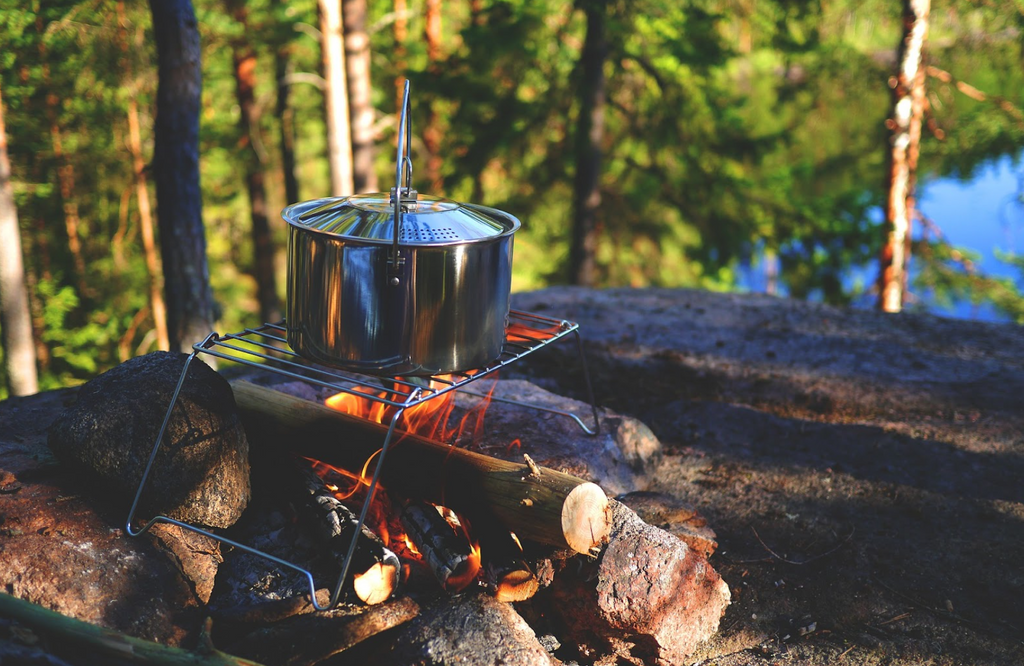
Weeklong Adventure Gear: Back to the Basics
This guide has covered the special requirements of packing for an extended outdoor trek. We have already published more general guides on how to pack for a hiking adventure. Check out these guides to get a complete picture of what you need to include in your tactical backpack!
How to Pack a Tactical Gear Bag for an Outdoor Workout
How to Pack a Tactical Backpack for Hiking: Essentials to Include for All Types of Terrain
Packing Smart: A Comprehensive Checklist for Your Next Adventure
Cold Weather Hiking: Essential Tactical Gear for Winter Trails


